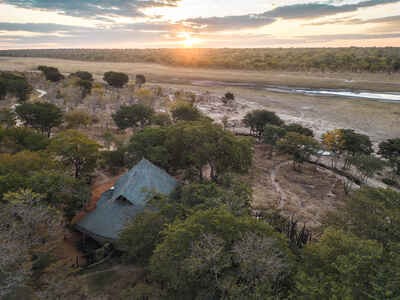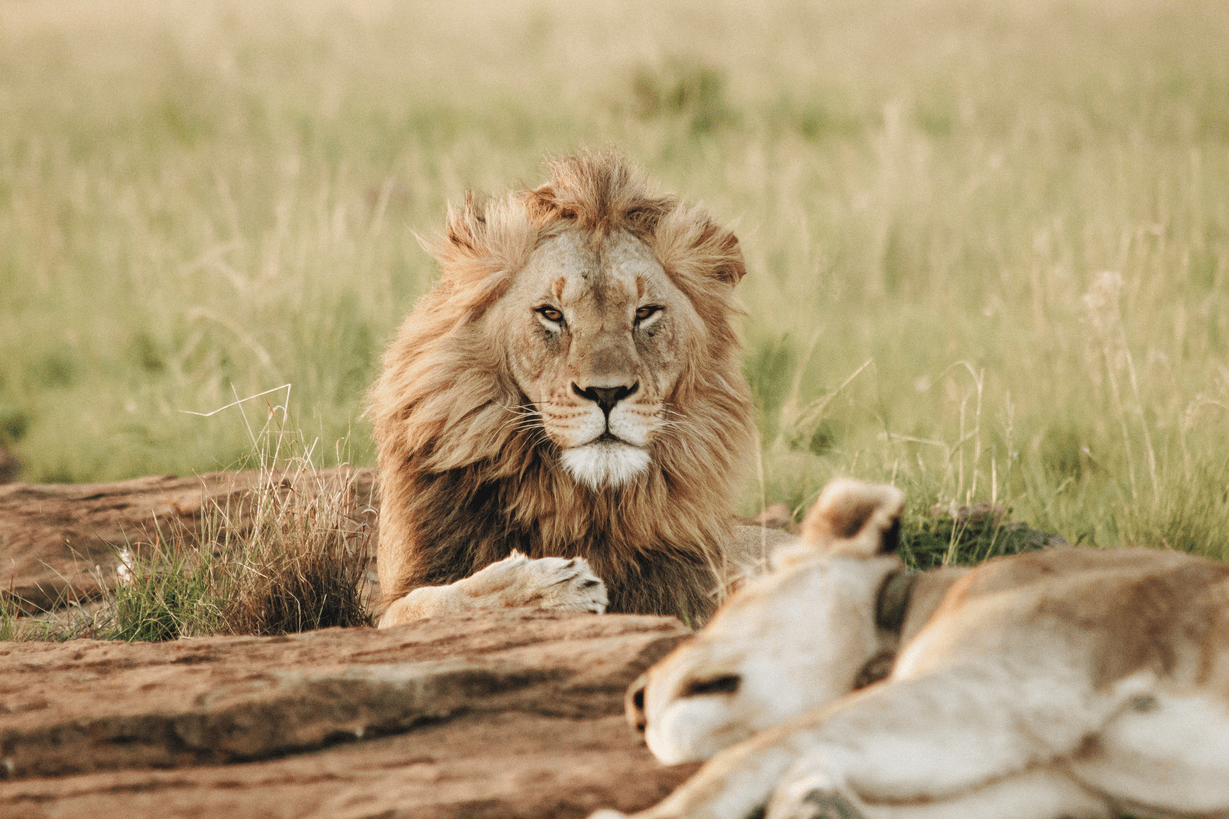About Sable Valley Lodge
Chosen by the late Queen Elizabeth II for a safari in 1991, Sable Valley Lodge lies on the Dete Vlei.
Although birding was a prime interest for the royal couple, Sable Valley also offers superb wildlife viewing within a newly extended private concession – where elephant and buffalo top the bill, along with a range of predators.
The lodge was fully refurbished in 2022, yet the traditional style prevails. Rondavels and the entire main area are tucked beneath thatched roofs that reach almost to the ground. Dark-wood furniture, comfortable seating and traditional African décor still hold sway.
But contemporary comforts abound too. A circular pool is surrounded by individual day beds or “salas”; a pizza oven is a hit with families wishing to create their own lunch; and a resident masseuse is on hand to soothe away aches and pains.
With its back to teak forest, the main area looks out across open savannah, affording plenty of opportunities for game viewing – from your dining table or firepit, from a tree-top platform or hide. And, of course, from a game-drive vehicle or on a guided walking safari.
With its proximity to Hwange National Park and access to private safari areas, Sable Valley offers a superb spread of safari options.
Our view
Sable Valley Lodge has been operating for over 40 years and we can see why. The lodge is conveniently located close to Hwange yet within a private reserve that allows additional flexibility on activities. The recent upgrades have refreshed this traditional safari lodge bringing additional creature comforts to the rooms, although the most notable addition is the excellent new hide. Even with the upgrades, we consider that Sable Valley Lodge remains one of Hwange’s best-value safari lodges.
Accommodation
11 rooms
Children
Fine for all ages
Open
All year
Activities

4WD Safari

Birdwatching

Cultural excursion

Guided walking safari

Private activities
Traveller reviews of Sable Valley Lodge
4 real, un-edited reviews from Expert Africa's travellers.
Arrived 29 Apr 2025, 4 nights
"Sable Valley Lodge review"
Overall rating: Excellent
Arrived 9 Jan 2025, 3 nights
"Sable Valley Lodge review"
Overall rating: Excellent
Arrived 6 Sep 2024, 3 nights
"Sable Valley Lodge review"
Overall rating: Excellent
Arrived 28 Jul 2023, 3 nights
"Sable Valley Lodge review"
Overall rating: Excellent
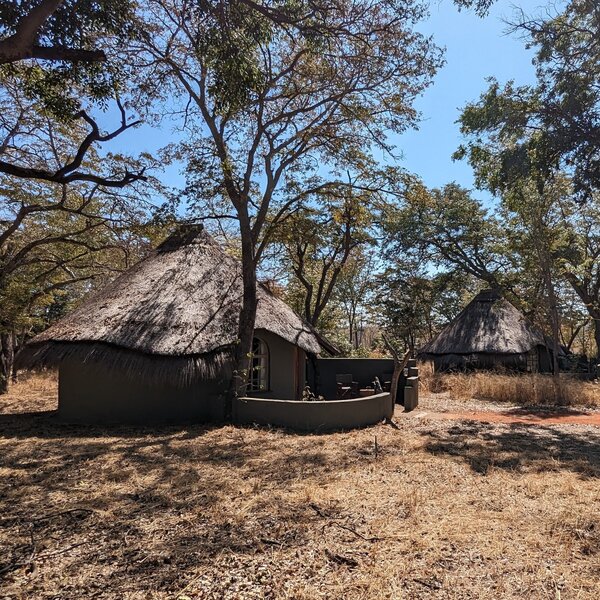
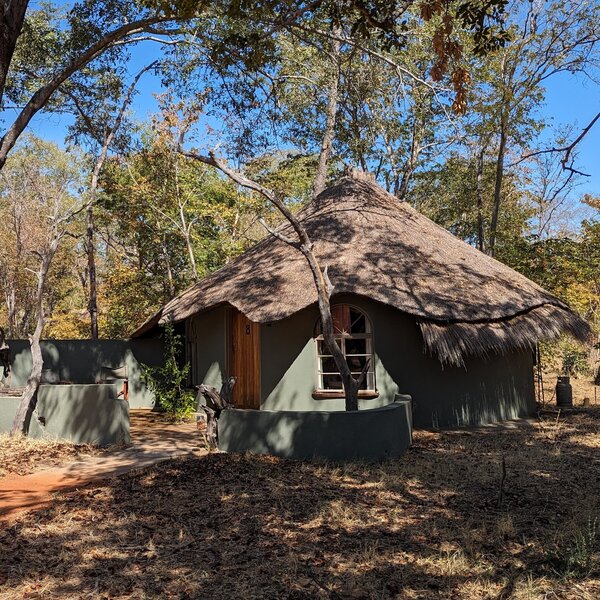
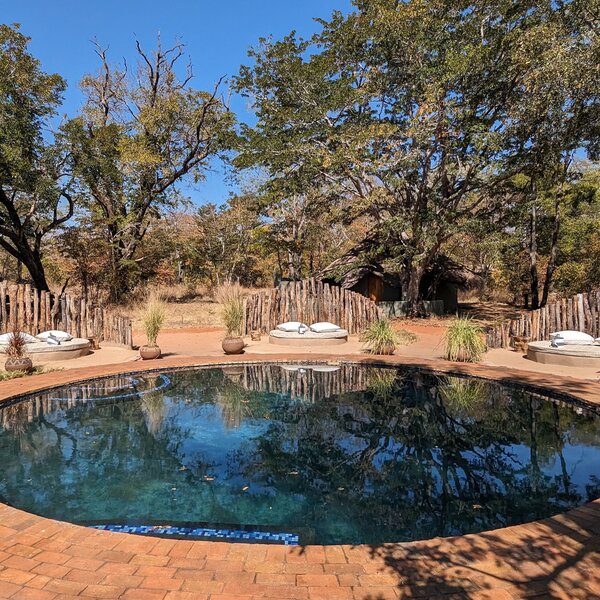
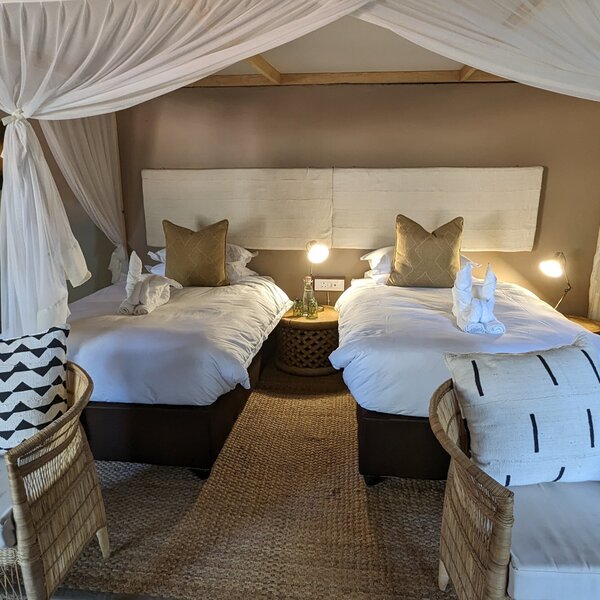
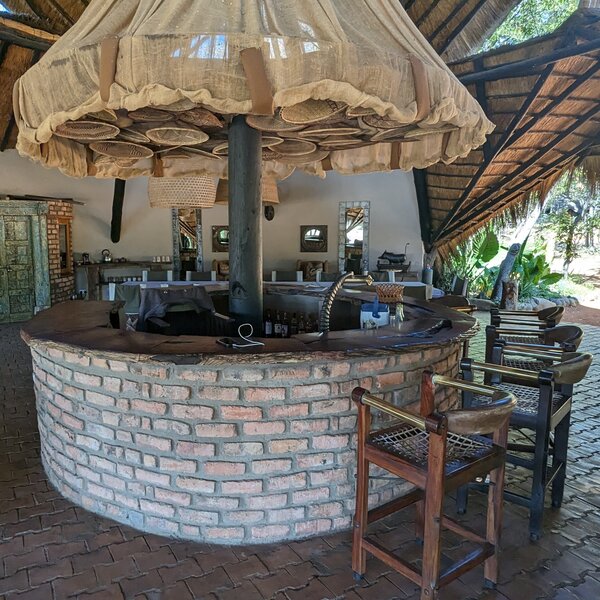
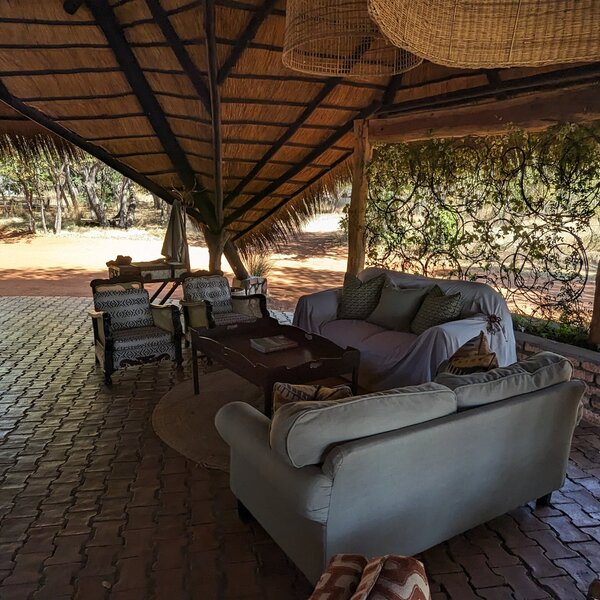
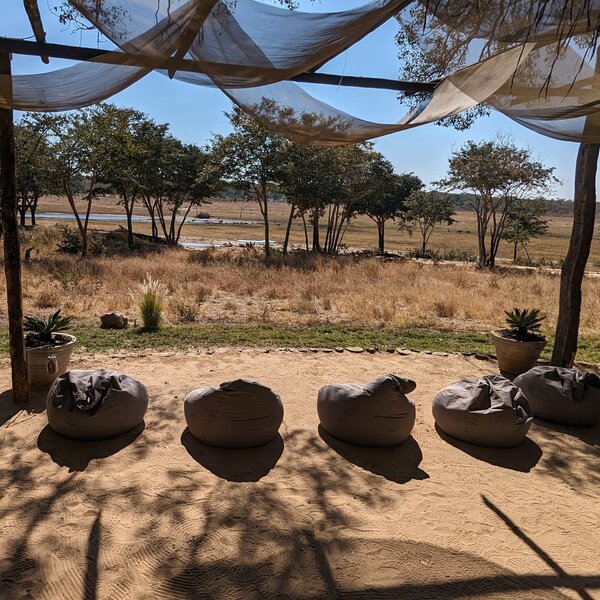
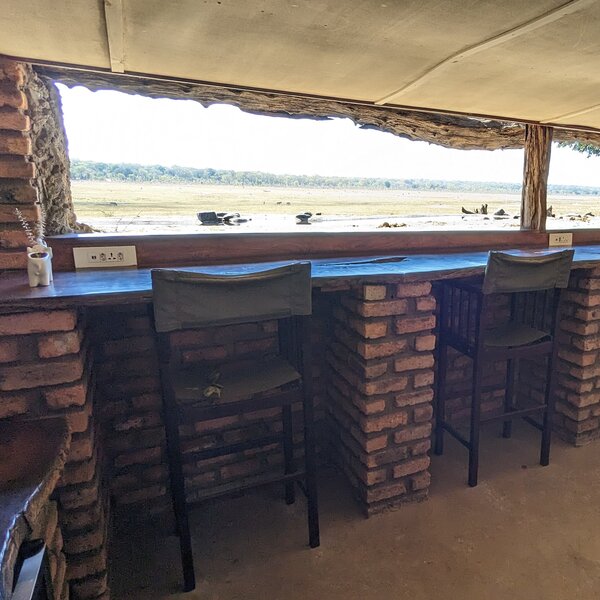
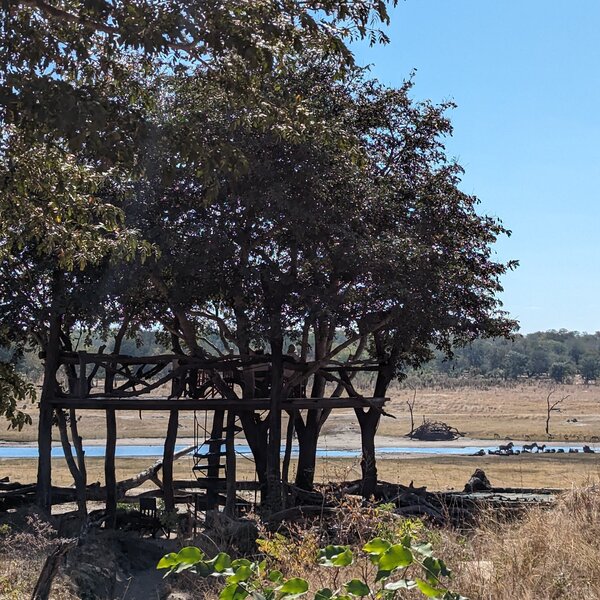
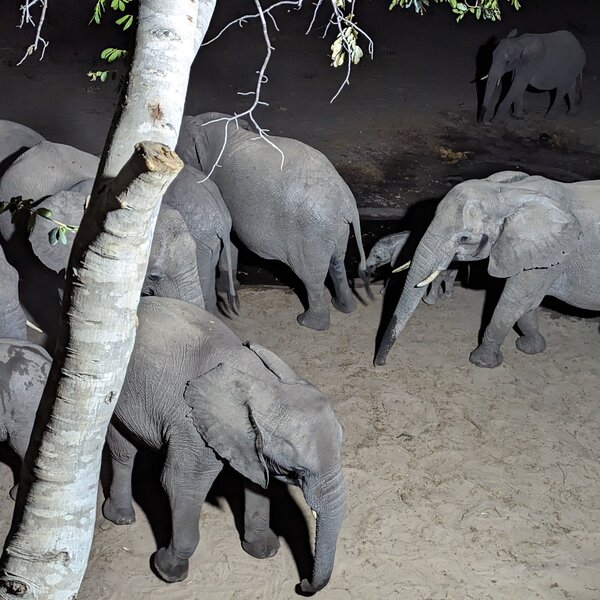
Expert Africa's gallery
When we travel we take lots of photos ourselves to give you a real and un-edited view of the safaris. See our 56 pictures of Sable Valley Lodge to get the candid view.
View gallerySable Valley Lodge: Our full report
Set on Dete Vlei, just outside Zimbabwe’s Hwange National Park, Sable Valley Lodge was extensively refurbished in 2022.
The lodge was originally built in the late 1980s and was called Sable Sands from 2012 to 2022. It falls within an extensive private reserve that combines pristine teak forest with open savannah, liberally dotted with anthills.
From its location on the 12km Dete Vlei, a dried-up riverbed that runs in front of the lodge, Sable Valley shares a newly extended 63km² concession with its sister camps, Khulu Bush Camp and Ivory Lodge.
Sable Valley’s 11 rooms, with their circular shape and steep thatched roofs, are classic thatched rondavels. Set in a mature teak forest, they are arranged in a circle around the lodge’s swimming pool.
Inside, the rooms offer no-fuss comfort. King, queen or twin beds topped with cosy duvets and blankets to keep out the cold of Zimbabwe’s winter nights are curtained by mosquito nets to keep biting insects at bay. A second, free-standing fan complements a ceiling fan to help cool the room in the head of the day. Clean white walls are brightened by carefully selected photos of Hwange’s wildlife, while wicker chairs, carved wooden bedside tables and a luggage rack complete the uncluttered look.
To the back of the bedroom is a compact bathroom with a shower, single basin and flush toilet. When we stayed in July 2023, the original 1980s’ avocado bathroom suite was still in situ. We understand that replacing these with something more modern is next on the list for the new owners. In the meantime, while the avocado porcelain may feel a little dated, everything was clean and functional and, for some, it may provide a touch of nostalgia.
Room 1, known as the Queen’s Room, is where the royal couple stayed on their visit. As the only room with a bathtub, it’s ideal for honeymoon couples or those celebrating a special occasion. Room 8, which has a second bedroom, is ideal for families travelling with younger children.
To the front of each room is a small seating area with a table and a couple of folding directors’ chairs. All the rooms look out over a circular pool which is surrounded by individual “salas” or daybeds.
Back at the open-sided main area the traditional safari-lodge feel continues. The bar, main dining area and squashy sofas are shaded under deep thatch that almost touches the ground. To the front, a veranda with directors’ chairs and oversized bean bags is shaded by suspended netting. With its views of Sable Valley’s waterhole and the savannah beyond, this was the most popular place to enjoy a meal or relax with a book during our stay.
Down a gentle slope, and sharing the veranda’s view, is a sunken firepit, the perfect place to enjoy a warming tea or coffee in the cool early mornings, and a natural focal point for guests before and after dinner.
Since taking over the lodge, the new owners have added a sunken hide overlooking the lodge’s waterhole, and above it a tree-top viewing platform. The hide is a cool and inviting spot in which to relax during the heat of the day, and comes complete with international electrical points for charging phones and camera equipment, Wi-Fi and a mini-fridge bar which is run on an honesty system. We also thoroughly enjoyed a quiet hour in the tree-top hide one evening before dinner; it isn’t often you have the opportunity to gain a bird’s eye view of a herd of elephants. On our second evening, we were treated to dinner in the trees, although our presence on that occasion may have kept the wildlife away.
It is worth noting that, to keep the larger, most dangerous wildlife at bay, the lodge is surrounded by an electric fence, which runs over the top of the sunken hide to provide an unimpeded view of the waterhole. Fences are fairly unusual in Hwange National Park but here it enables guests to walk around the lodge at night unescorted, making Sable Valley one of the more family-friendly options in the area.
Activities include morning and afternoon guided game drives, both within the private reserve and in Hwange National Park, and guided walking safaris into the national park. Being in a private reserve, Sable Valley can also offer night drives, although these are weather-dependent and are usually just in the warmer months (September– March). In addition to the hide at the lodge, there is a log-pile hide on the vlei where guests can arrange “hide sits” for further wildlife watching and photographic opportunities. With 470 species of bird recorded in the surrounding area, Sable Valley is in an excellent location for birding as well as for predators and plains game.
We understand that there are plans to build a sleep-out platform on the reserve, which will be shared with Ivory Lodge and Khulu Bush Camp. There are also plans to offer massages and other wellness treatments in the future. Once we know more, we will add more information here.
Away from the area’s wildlife, the team behind Sable Valley are proud of their conservation and community outreach activities such as funding anti-poaching teams, an elementary school and helping at a care home for the elderly. For guests who are interested in this work, the lodge can arrange visits to their projects in the area.
Finally, for those with time, we highly recommend visiting the Painted Dog Conservation’s headquarters, which are in easy reach of the lodge. Here guests can learn more about painted or wild dogs, the challenges they face and what is being done to protect them. As with many conservation stories the message is not always positive, but it is clear that this NGO is making a real difference and there is hope for Hwange’s painted dogs in the future.
Activities
4WD Safari
Birdwatching
Cultural excursion
Guided walking safari
Private activities
Families & children
- Attitude towards children
- Families with children are welcome at Sable Valley.
- Property’s age restrictions
- None
- Special activities & services
- Sable Valley has one family room. There is a pizza oven close to the pool where families can indulge in creating their own pizzas.
- Equipment
- A cot is available for infants on request.
- Generally recommended for children
- The lodge is fenced, enhancing security, and its pool is an attraction for children when they are not out on activities; we think Sable Valley is one of the most family-friendly lodges in the Hwange area.
- Notes
- The pool is unfenced and unguarded, and although the lodge is fenced, the fence cannot keep out all dangerous wildlife, so children still need constant supervision by a responsible adult.
Food & drink
- Usual board basis
- Full Board & Activities
- Food quality
- We enjoyed a variety of excellent home-cooked-style meals during our stay at Sable Valley in July 2023. We understand that with advanced notice the lodge team should be able to assist with most dietary requests.
During our stay we opted for an early start so our breakfast was split between early morning tea and coffee with cereal and fresh muffins at the lodge, and a packed breakfast in the park. Our breakfast pack featured a toasted bacon-and-egg sandwich, yoghurt, fresh fruit and another muffin. Back at the lodge a more extensive breakfast buffet of cereals, muffins, cold meats and cheeses and fruit is complemented by hot items including bacon, sausage, eggs and tomatoes cooked to order.
Lunch is usually served on the veranda overlooking the waterhole in the distance. We enjoyed spaghetti bolognese with a fresh bread roll and Greek-style salad followed by a gooey chocolate brownie and ice cream.
Dinner is usually a three-course meal. We enjoyed butternut soup with a fresh bread roll to start. Our main course was chicken served with gravy, rice, carrots, broccoli and cauliflower. The meal was rounded off with a lemon meringue pie. Traditional nights are also a weekly feature. These are taken in a boma and replace the main course with a traditional braai (BBQ). During our visit we were treated to steak, chicken, boerewors, sadza (also known as pap or maize meal) and boiled vegetables. There was also a musical interlude courtesy of the lodge’s staff. - Dining style
- Mixture of group dining and individual tables
- Dining locations
- Indoor and Outdoor Dining
- Further dining info, including room service
- Private meals can be arranged with advanced notice including on the treetop look-out platform and by the pool. Bush dinners are also available on request.
- Drinks included
- Local and regional beers and wines, soft drinks and house spirits are included.
Our travellers’ wildlife sightings from Sable Valley Lodge
Since mid-2018, many of our travellers who stayed at Sable Valley Lodge have kindly recorded their wildlife sightings and shared them with us. The results are below. Click an animal to see more, and here to see more on our methodology.

100% success

100% success

100% success

100% success

100% success

100% success

100% success

100% success

67% success

50% success

50% success

50% success

33% success

33% success

33% success

0% success

0% success

0% success
Getting there
- Location
- Hwange National Park, Zimbabwe
- Ideal length of stay
- 2–3 nights
- Directions
- Sable Valley Lodge is located about a 30-minute drive from Hwange Main Camp. Sable Valley can also be reached by flying into Hwange National Park Airport, just 10 mins away by road. Alternatively, it is possible to organise road transfers from Victoria Falls, Matobo Hills, or elsewhere in Hwange.
- Accessible by
- Self-drive or Fly-and-Transfer
Communications
- Power supply notes
- There is a back-up generator in case the solar system fails
- Communications
- There is WiFi in the main areas, including the hide. Although we didn’t test it, we are told there is good cellphone reception throughout the lodge.
- TV & radio
- None
- Water supply
- Borehole
- Water supply notes
- Hot running water is supplied by gas water heaters in each of the rooms.
Health & safety
- Malarial protection recommended
- Yes
- Medical care
- There is a clinic at Hwange Main Camp and the management staff and guides at Sable Valley are first-aid trained. A medical air-rescue service (MARS) covering Hwange is available in the event of an emergency.
- Dangerous animals
- High Risk
- Security measures
- There is a roaming nightwatchman on duty after dark.
- Fire safety
- There are fire extinguishers around the lodge, including outside each room.
Useful info
- Disabled access
- On Request
- Laundry facilities
- A laundry service is included here. Clothing is air-dried and will be returned the same day, weather-dependent.
- Money
- There is a digital safe in each room for valuables.
- Accepted payment on location
- There is little to pay for during your stay here. However, for any incidentals or extras, card payments are accepted on Vias or Mastercard. Cash payments may be made in US dollars.
Plan and book your trip with Expert Africa
All of our trips are tailor-made, so we'll always adapt them to suit you. Talk to an Expert and let us plan and arrange your perfect trip.

Talk to an Expert
Call or email us now! We’ll match you with the Specialist in our team who is best suited to help you. Then together we can start planning your trip.

Set up your itinerary
Based on our experience and your ideas, your specialist will create a detailed, costed itinerary. We’ll refine it together, until we have a trip that you’re perfectly happy with.

Prepare for your trip
The same Specialist will make the seamless arrangements for your trip, send you detailed travel documents, and be available to answer any questions before you depart.

Travel with peace of mind
After you set off, you’ll be cared for by our partners in Africa, most of whom have worked with Expert Africa for decades. And if you ever need us urgently, we’re available 24/7.

When you return
We love to learn about your trip, and so will always be grateful if you’ve the time to give feedback to your Specialist when you return.
Sable Valley Lodge's location
Look closer at the environment and surroundings of Sable Valley Lodge.
Other lodges in Hwange National Park
Alternative places to stay in this same area.
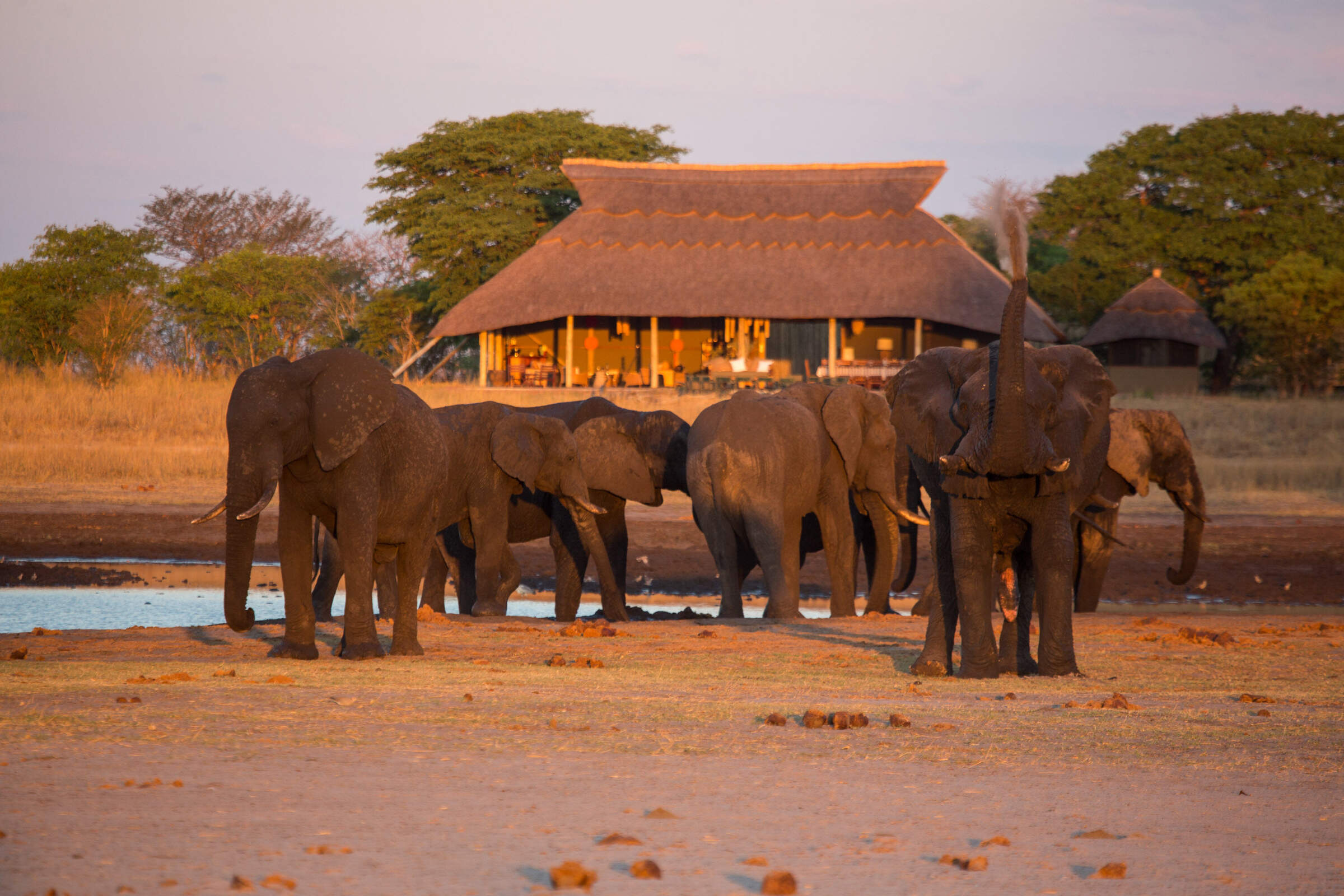
Camp Hwange
Overlooking a waterhole in a remote part of Hwange National Park, Camp Hwange offers great guiding in a pristine wilderness at reasonable prices.
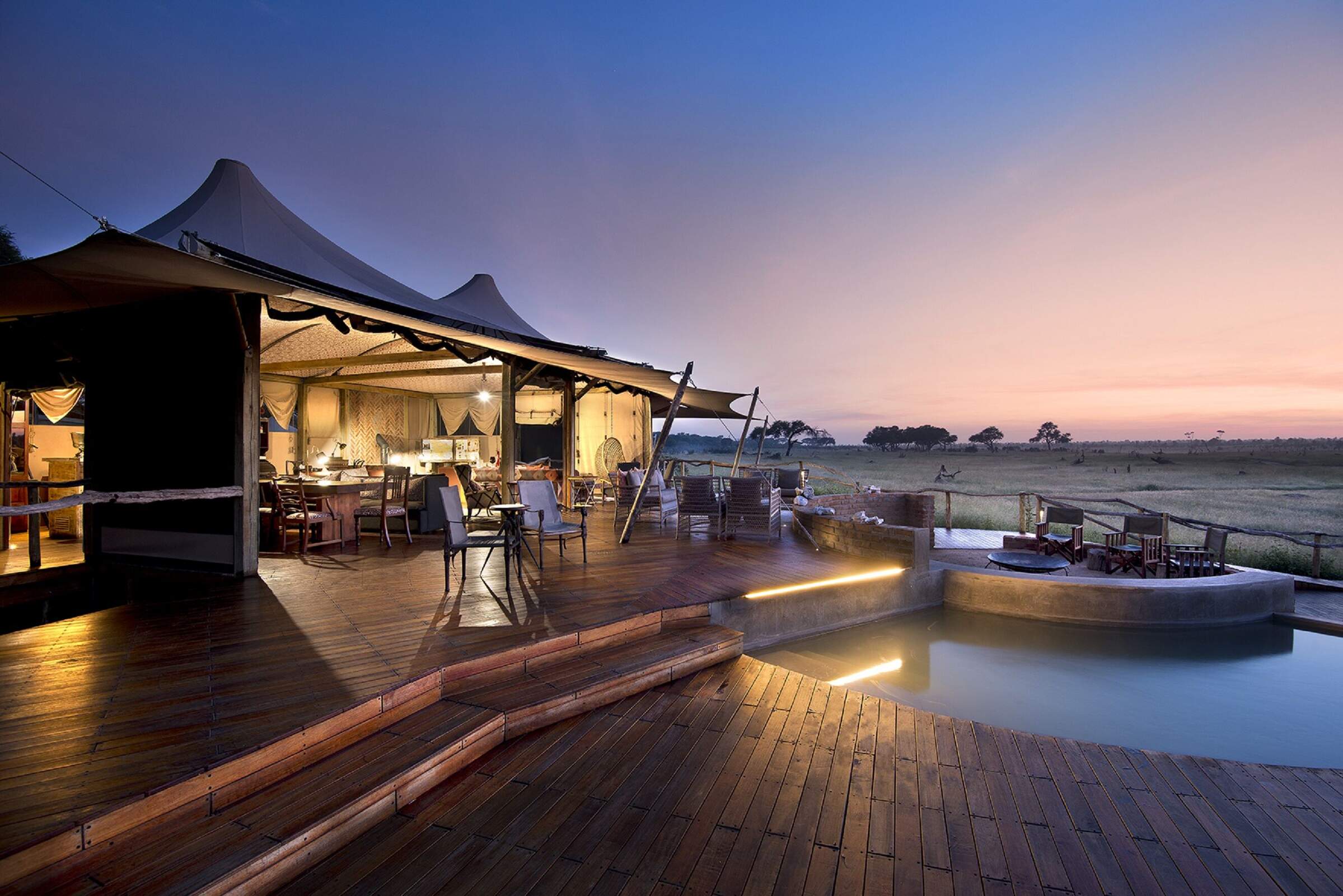
Somalisa Camp
Somalisa is a luxurious, yet remote, safari camp in Hwange National Park, offering walking safaris and game drives.
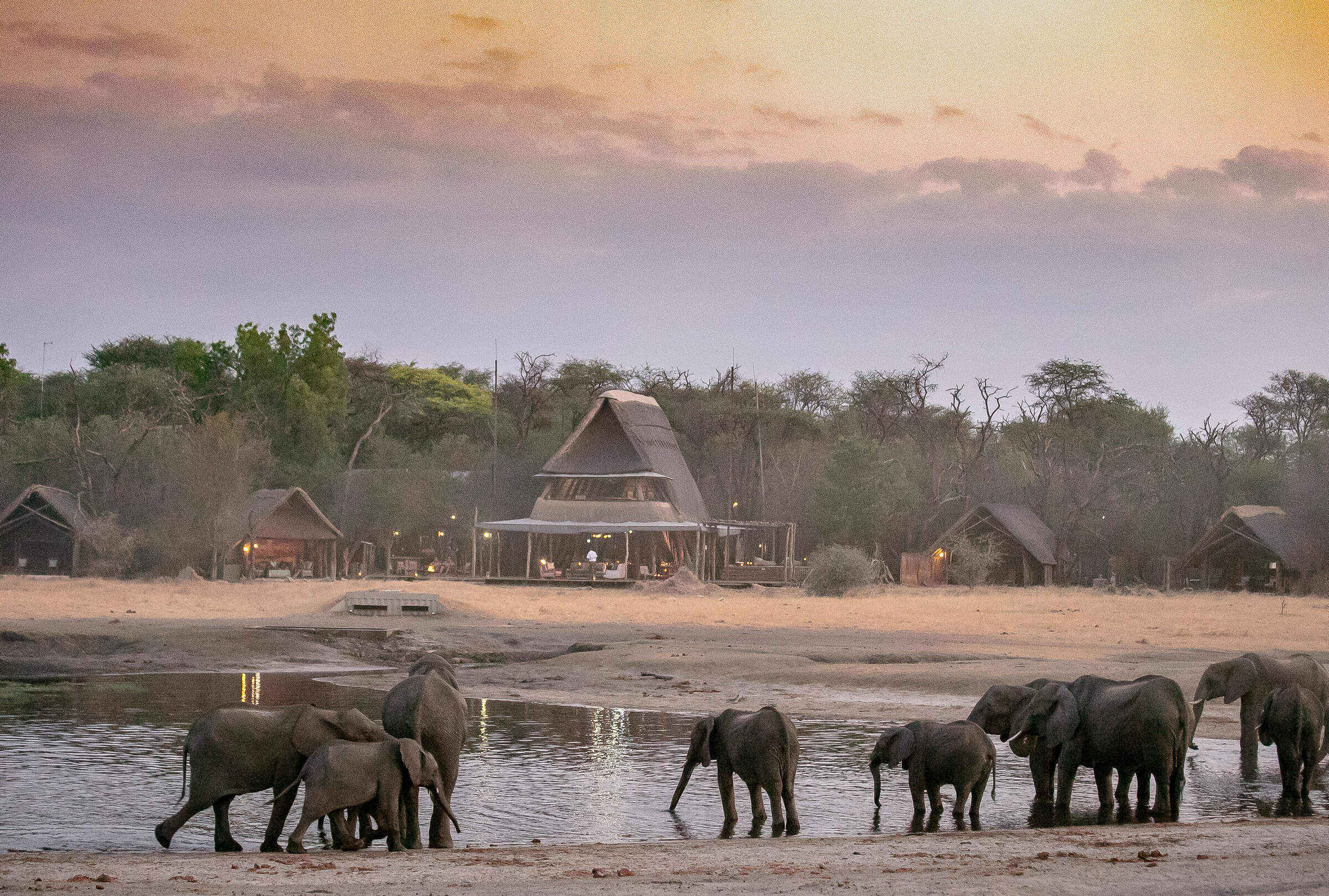
The Hide
Located in a small, private concession, The Hide is a relaxed and comfortable camp offering submerged hides and great family accommodation.
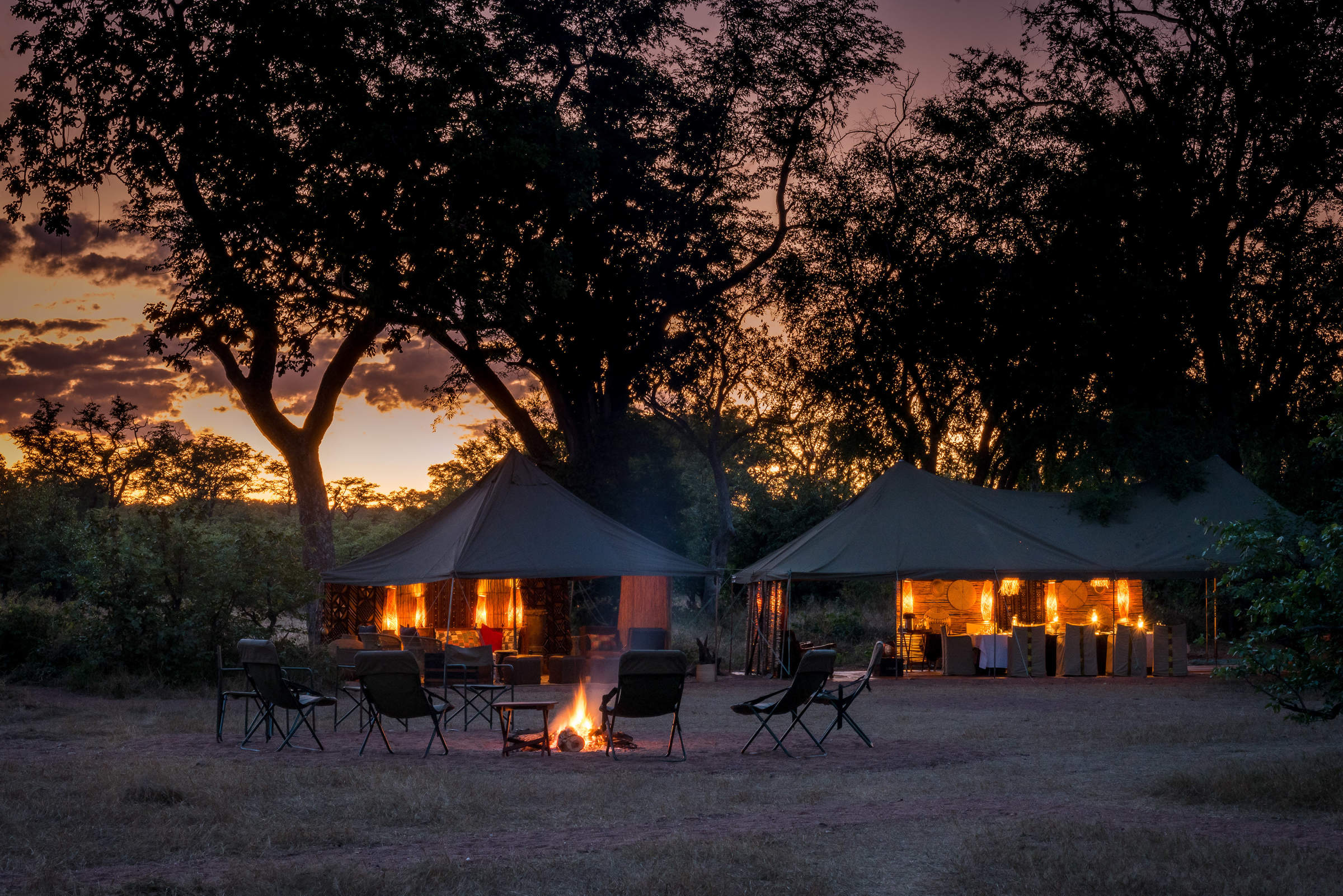
Hwange Bush Camp
Hwange Bush Camp is a small seasonal camp offering comfortable tents, great food, and superb guiding, and is often used by exclusive groups.
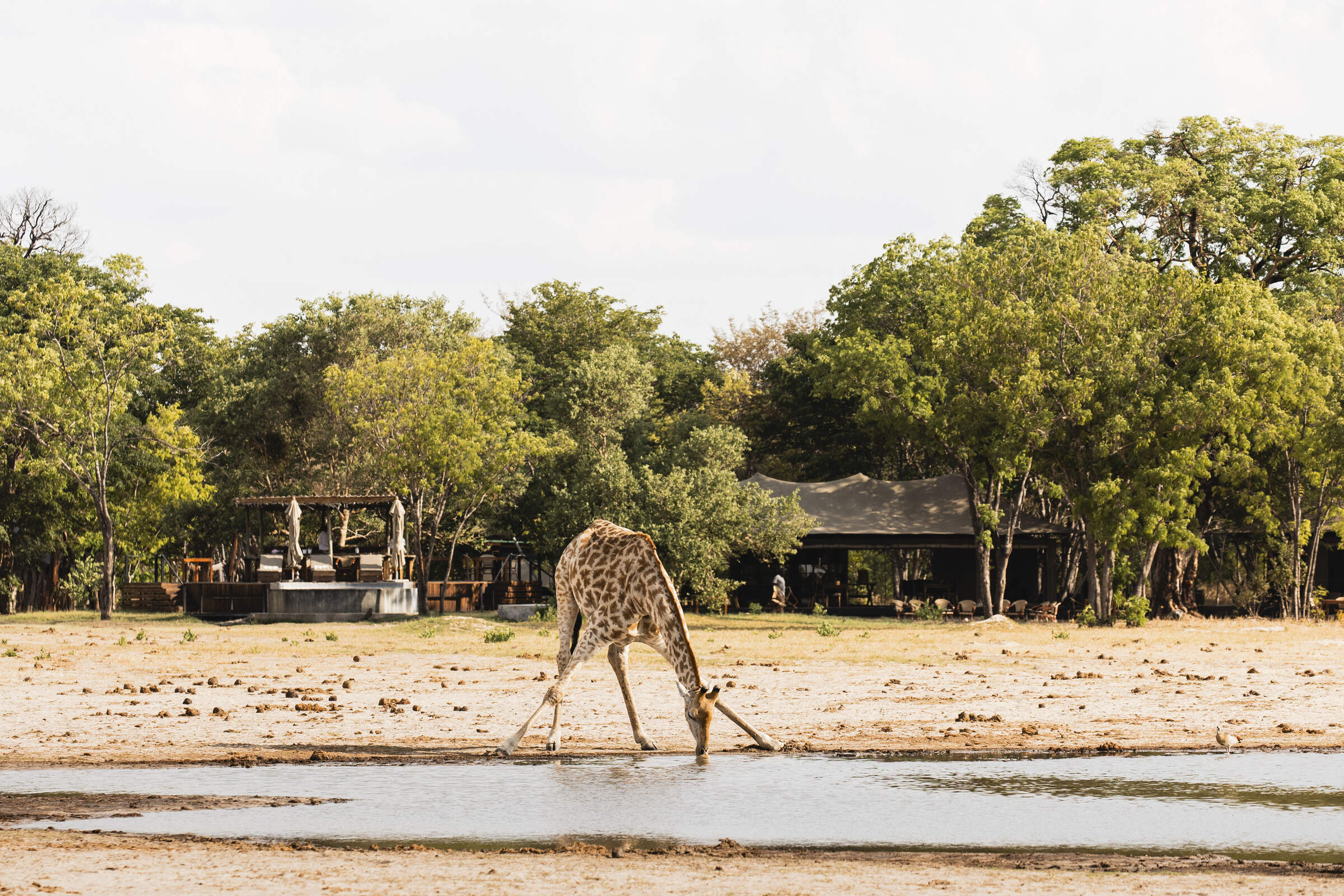
Little Makalolo Camp
Tucked away in Hwange National Park overlooking a waterhole, Little Makalolo Camp combines top guiding with excellent wildlife watching.
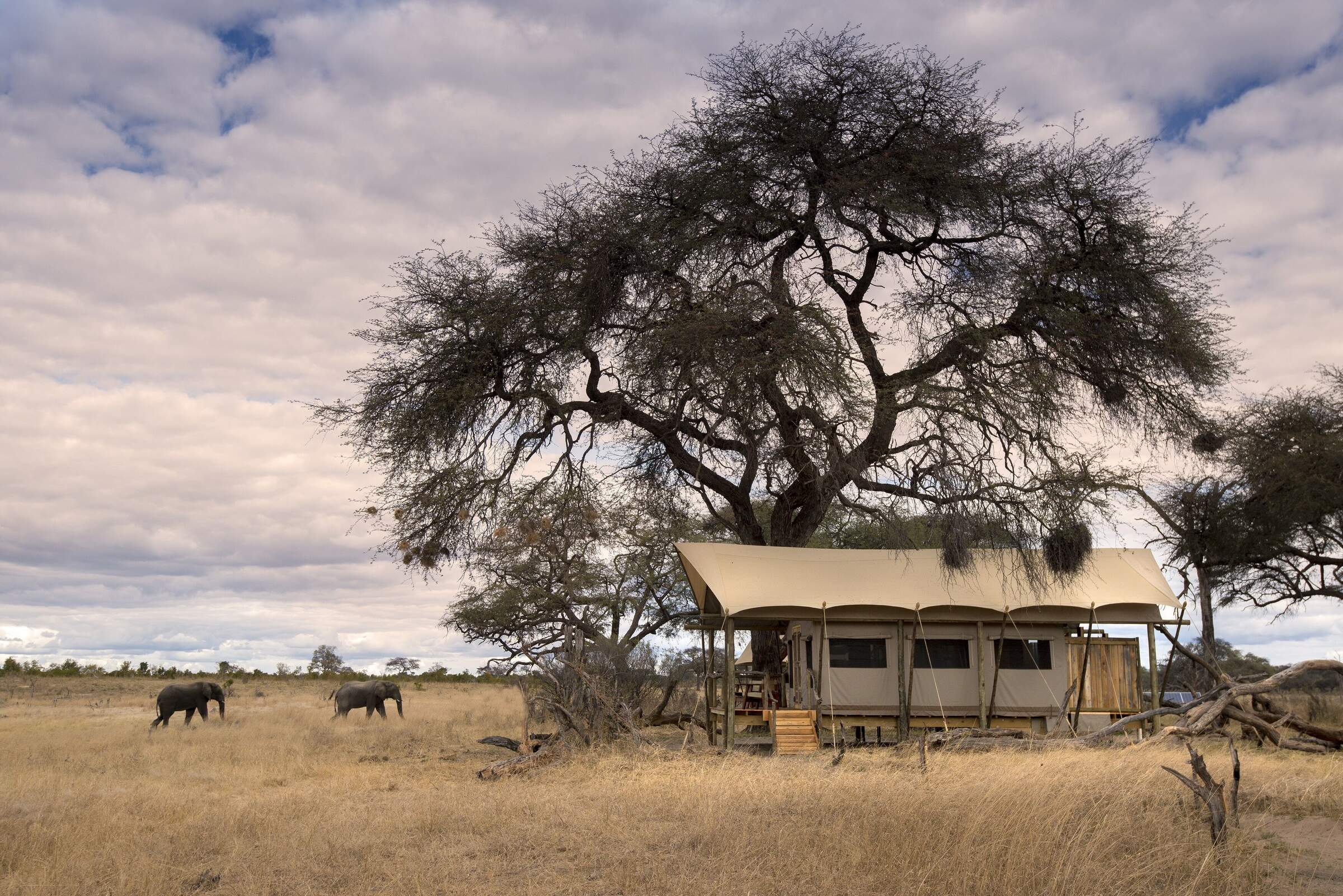
Somalisa Expeditions
A simple but stylish camp, Somalisa Expeditions sits in the heart of Hwange National Park, offering walking safaris and game drives.
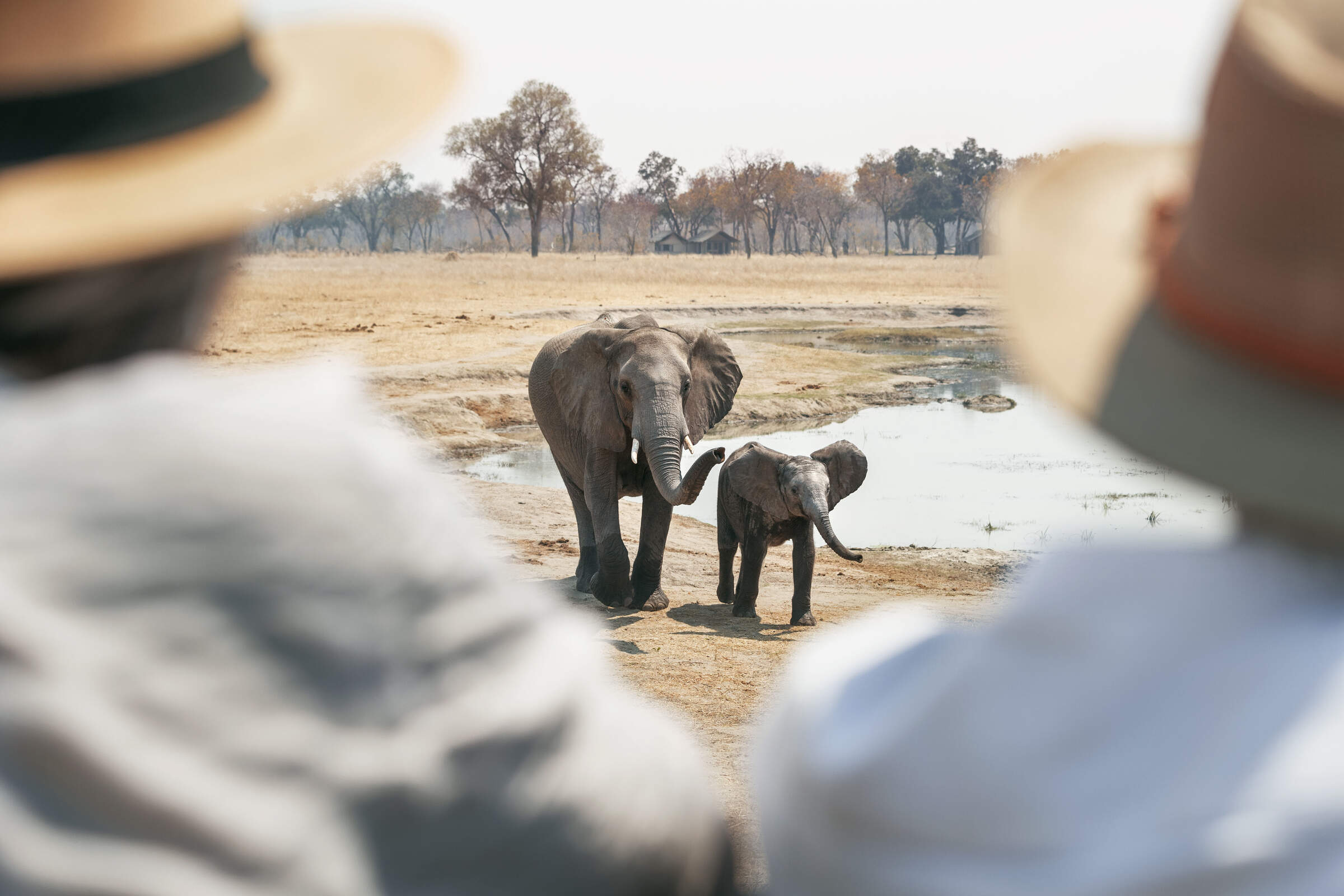
Davison's Camp
Within the Linkwasha Concession, Davison's Camp offers superb value for money, morning walking safaris and spot-lit drives after dark.
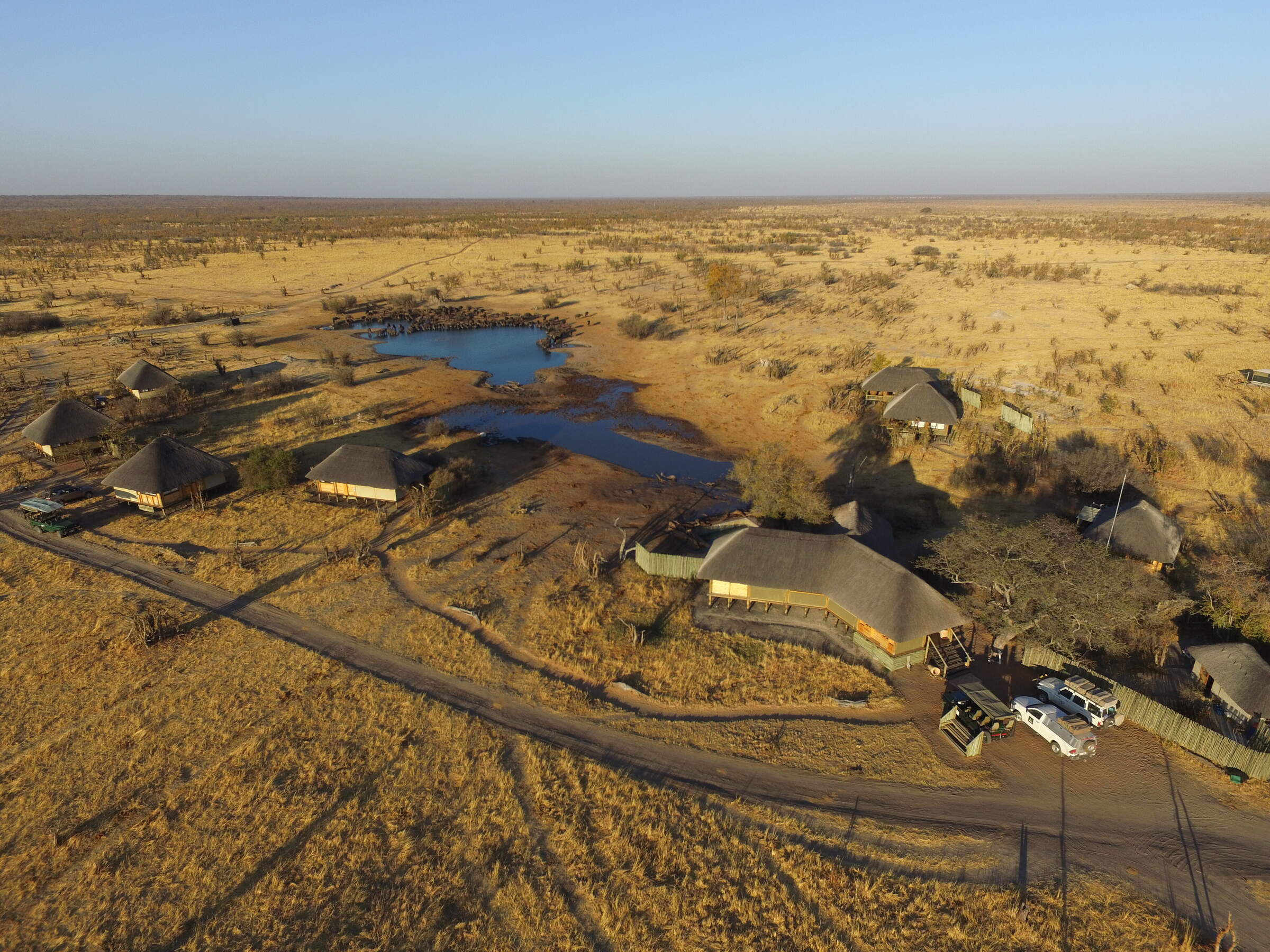
Nehimba Lodge
Nehimba is a comfortable, good-value camp in a remote area of Hwange National Park, teeming with wildlife.
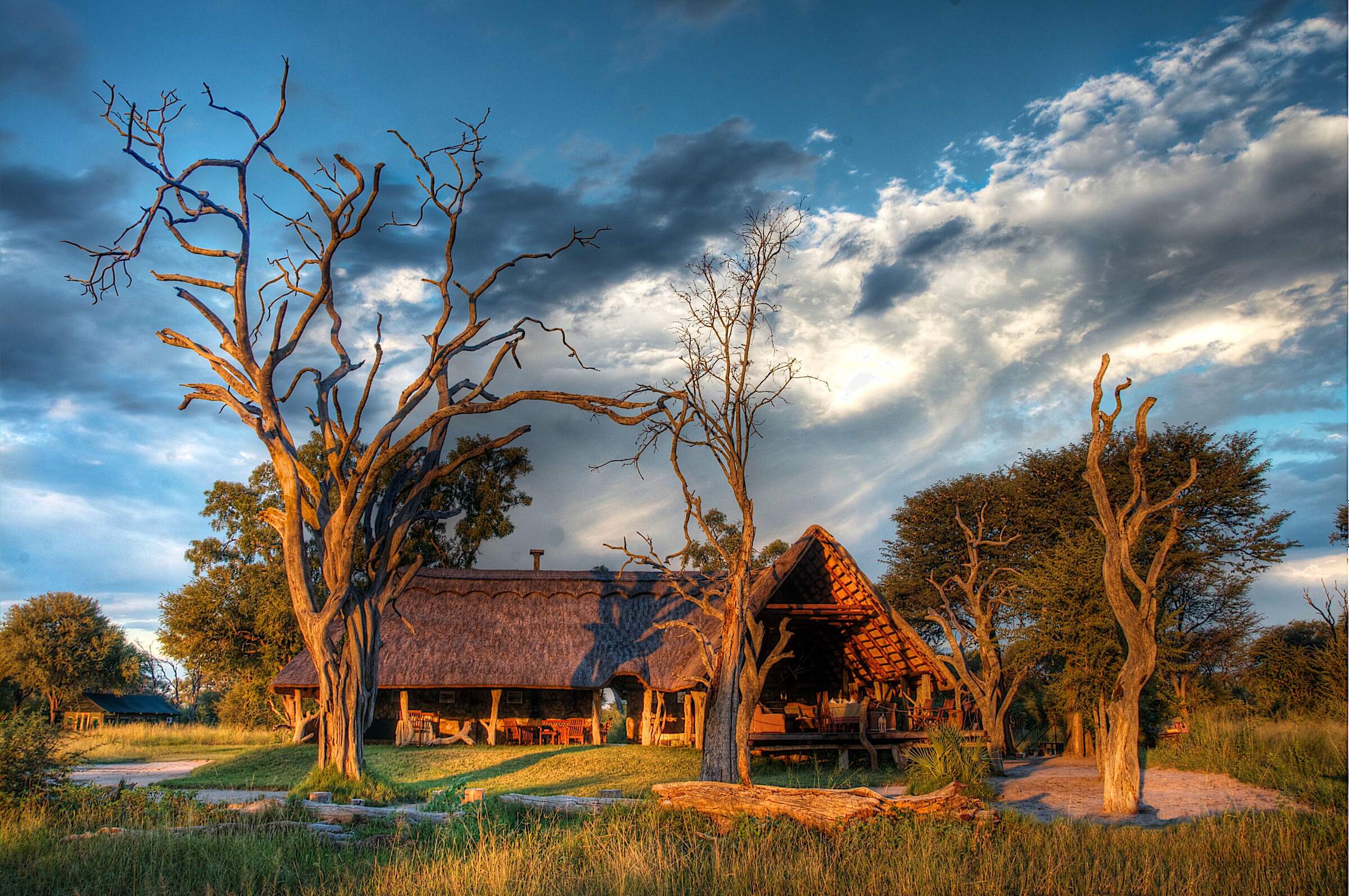
Bomani Tented Lodge
Bomani is a down-to-earth lodge with a range of activities in a remote region of western Zimbabwe, adjacent to Hwange National Park.
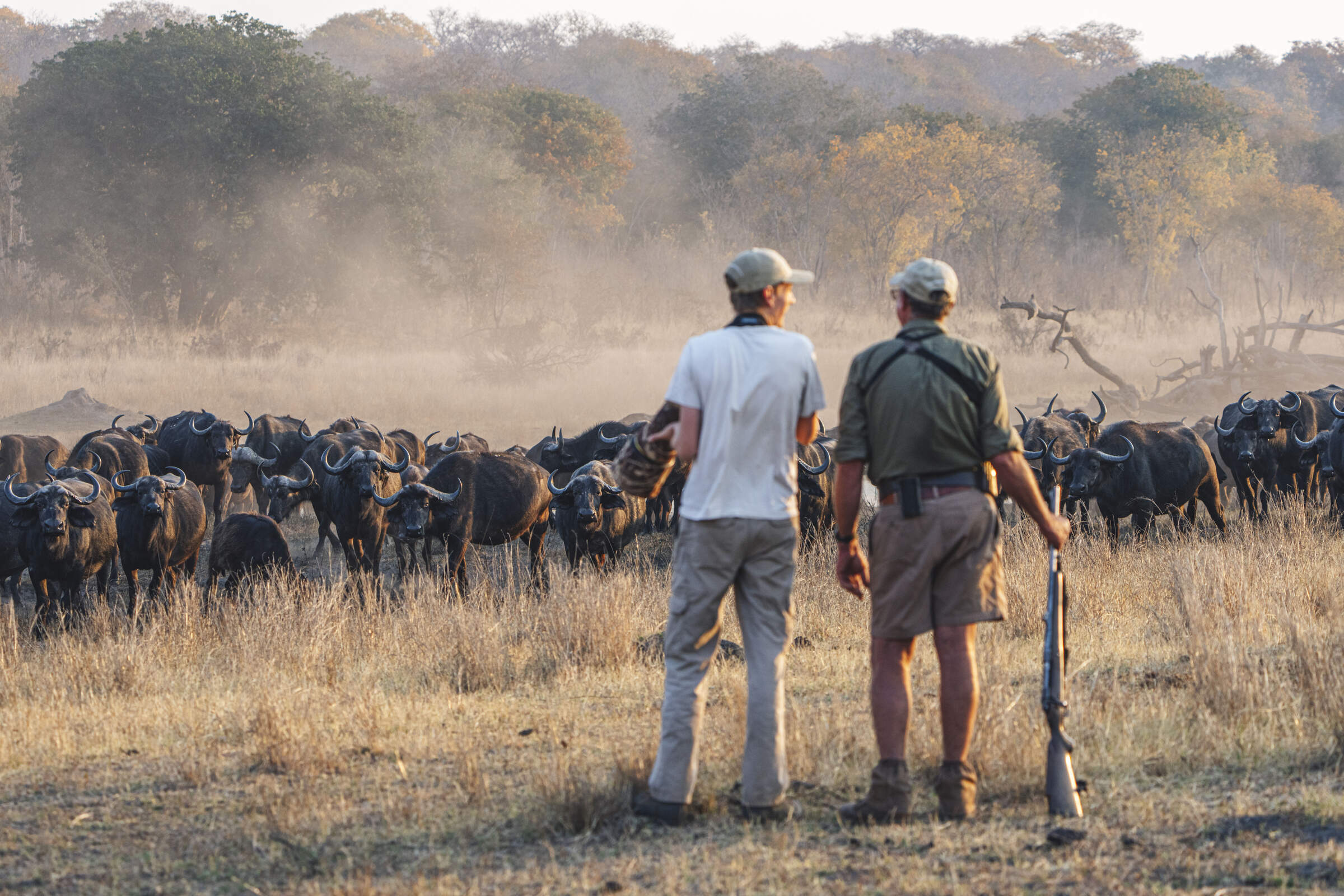
Khulu Bush Camp
Just outside Hwange National Park, Khulu Bush Camp features a waterhole popular with wildlife, especially elephants and offers excellent value for money.
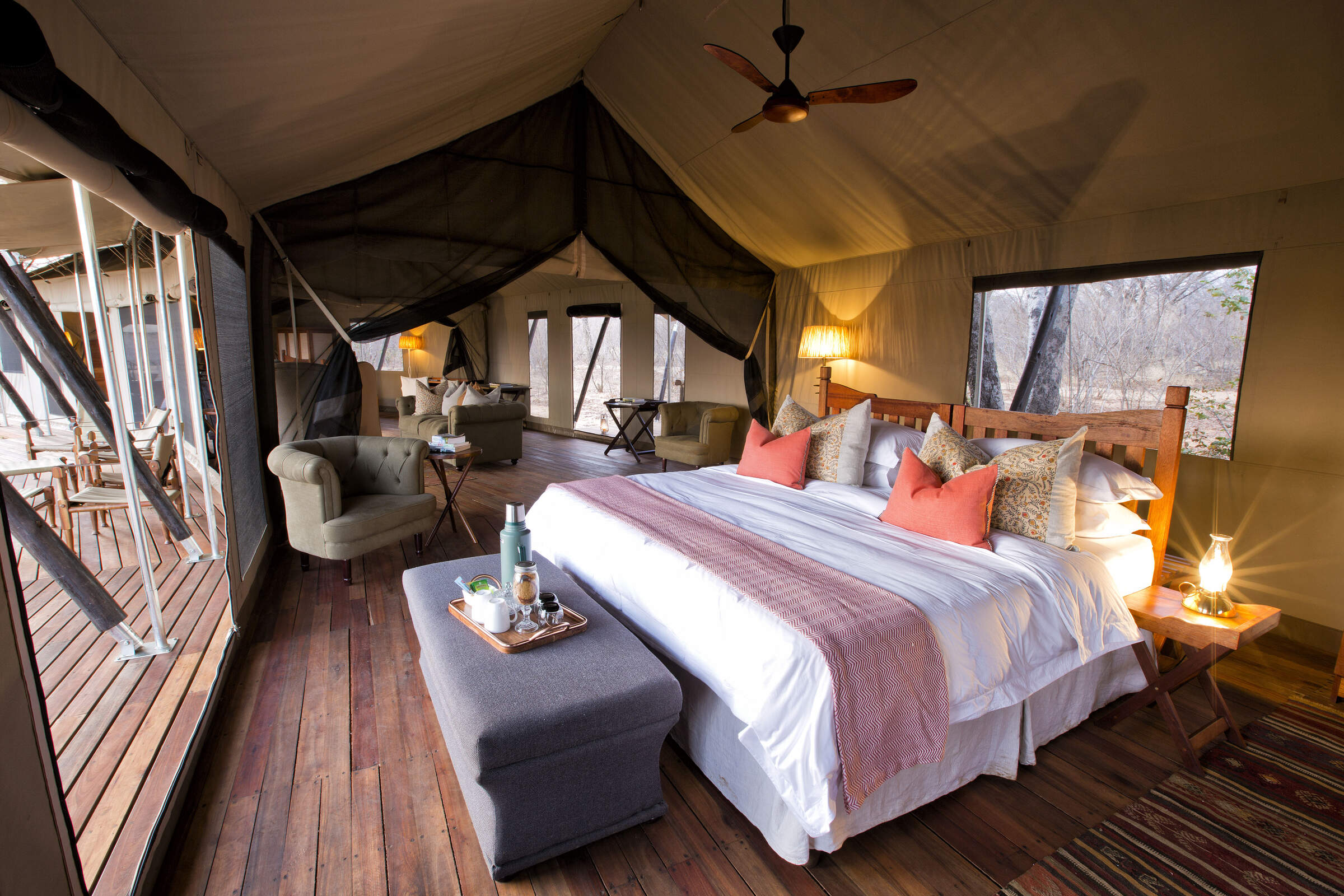
Verney's Camp
Verney's Camp is one of the newest offerings in Hwange, located in the wildlife rich, open landscape in the south-eastern section of the park.
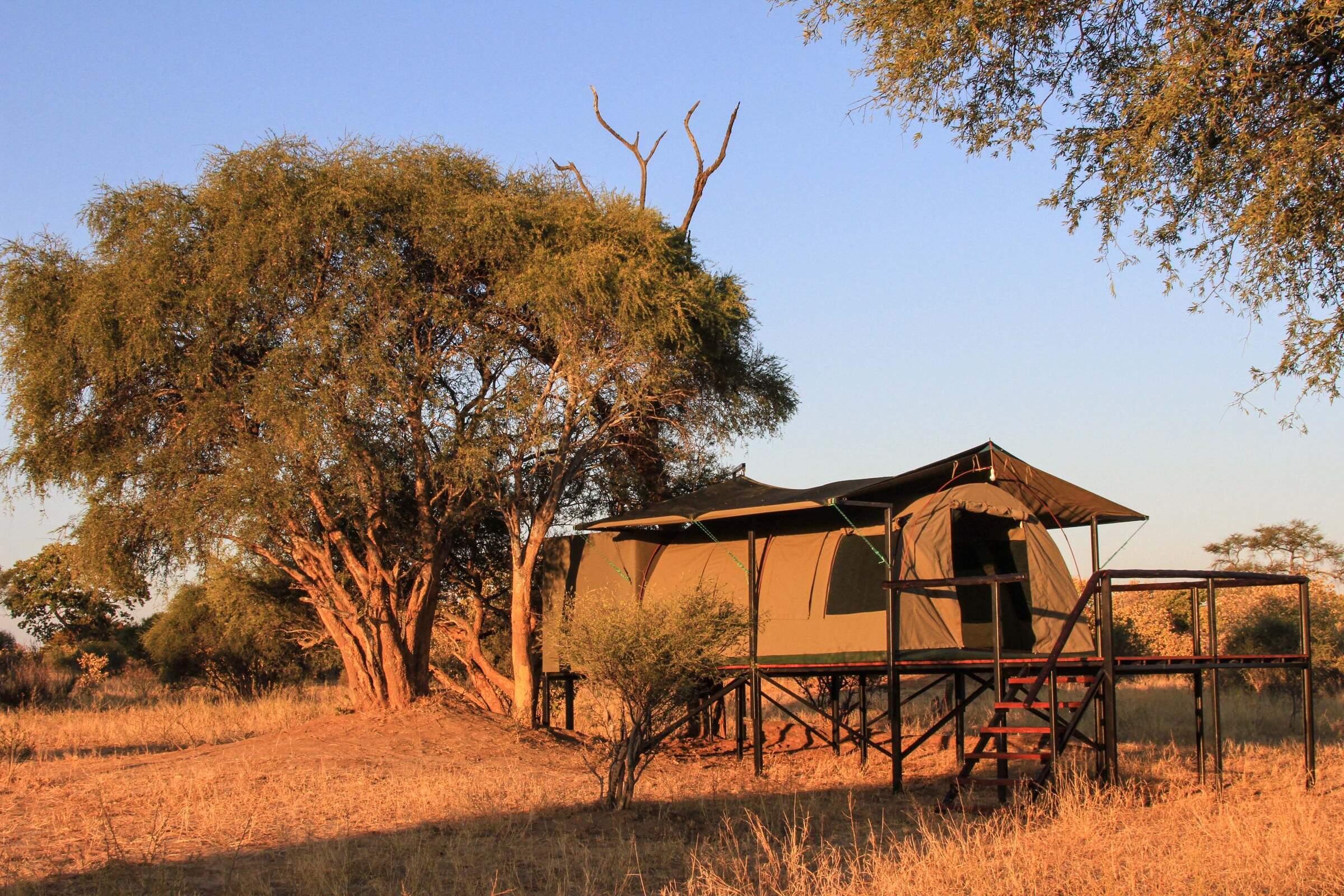
Jozibanini Camp
Remote and rugged, Jozibanini is one of the most remote camps in Zimabwe's largest National Park. Stay here for a real wilderness experience.
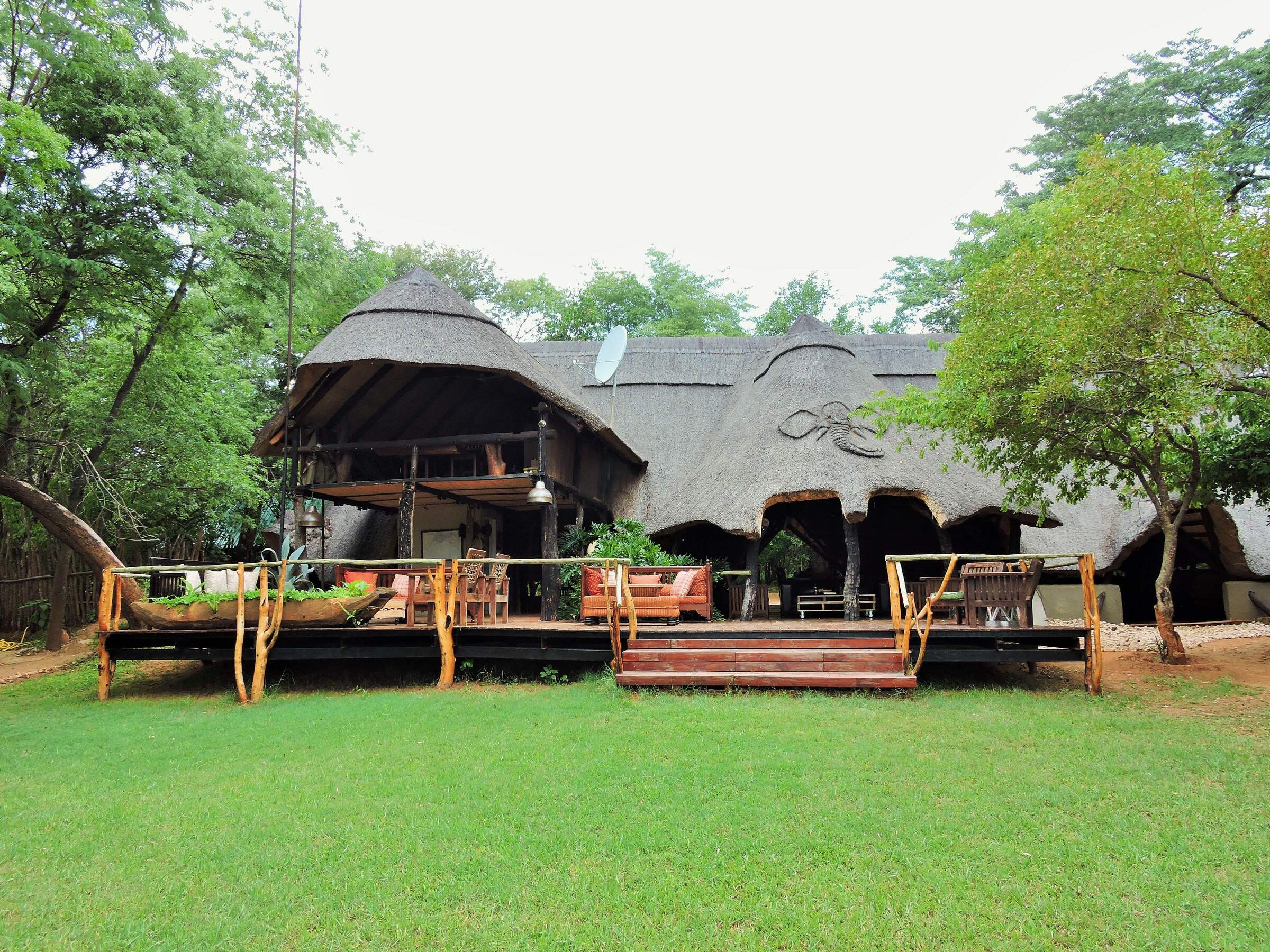
Ivory Lodge
Just outside Hwange National Park, the small Ivory Lodge is a great place to see large herds of elephant as well as smaller plains game.
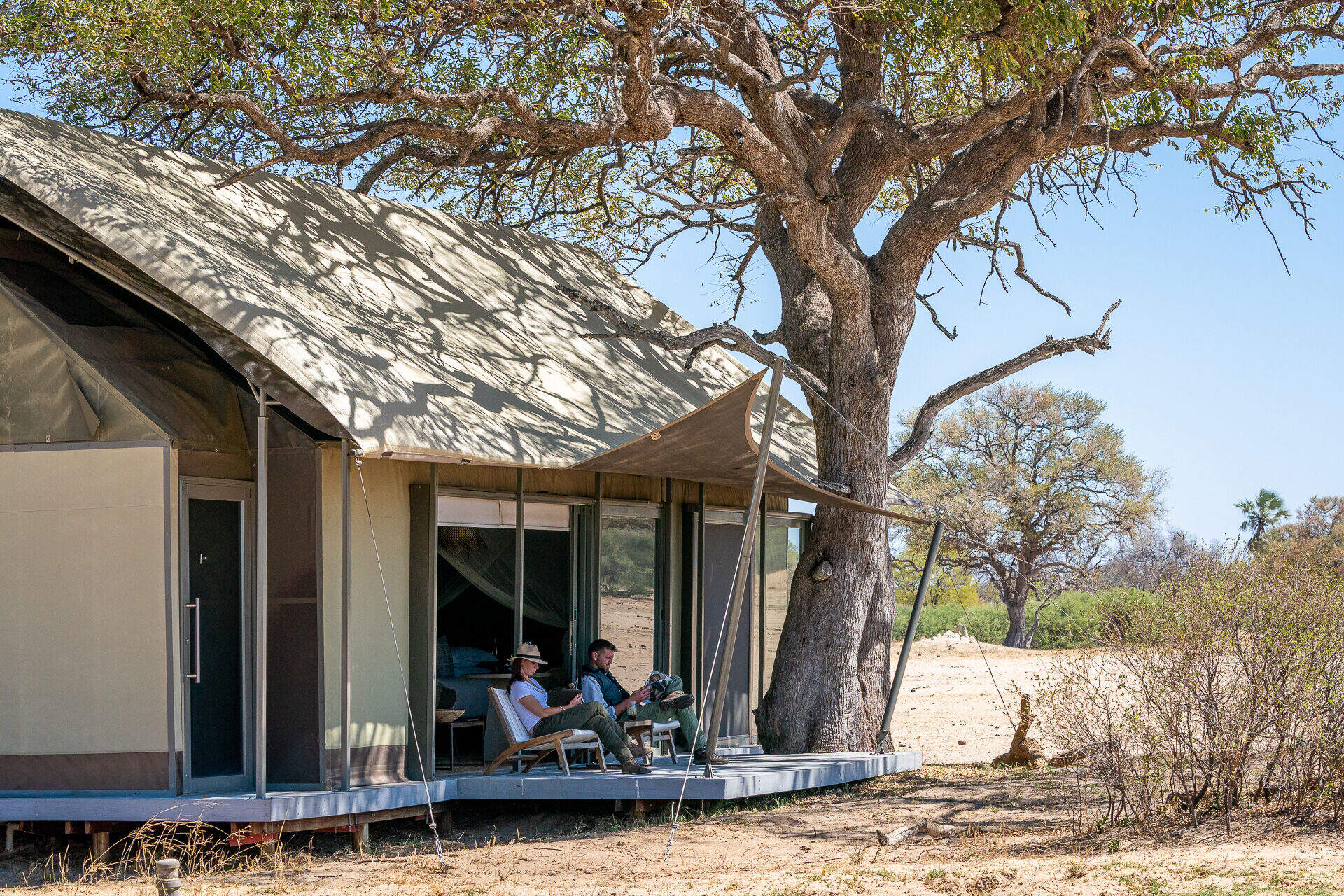
Linkwasha Camp
In its own private concession within Hwange National Park, Linkwasha offers excellent wildlife sightings and luxurious surroundings.
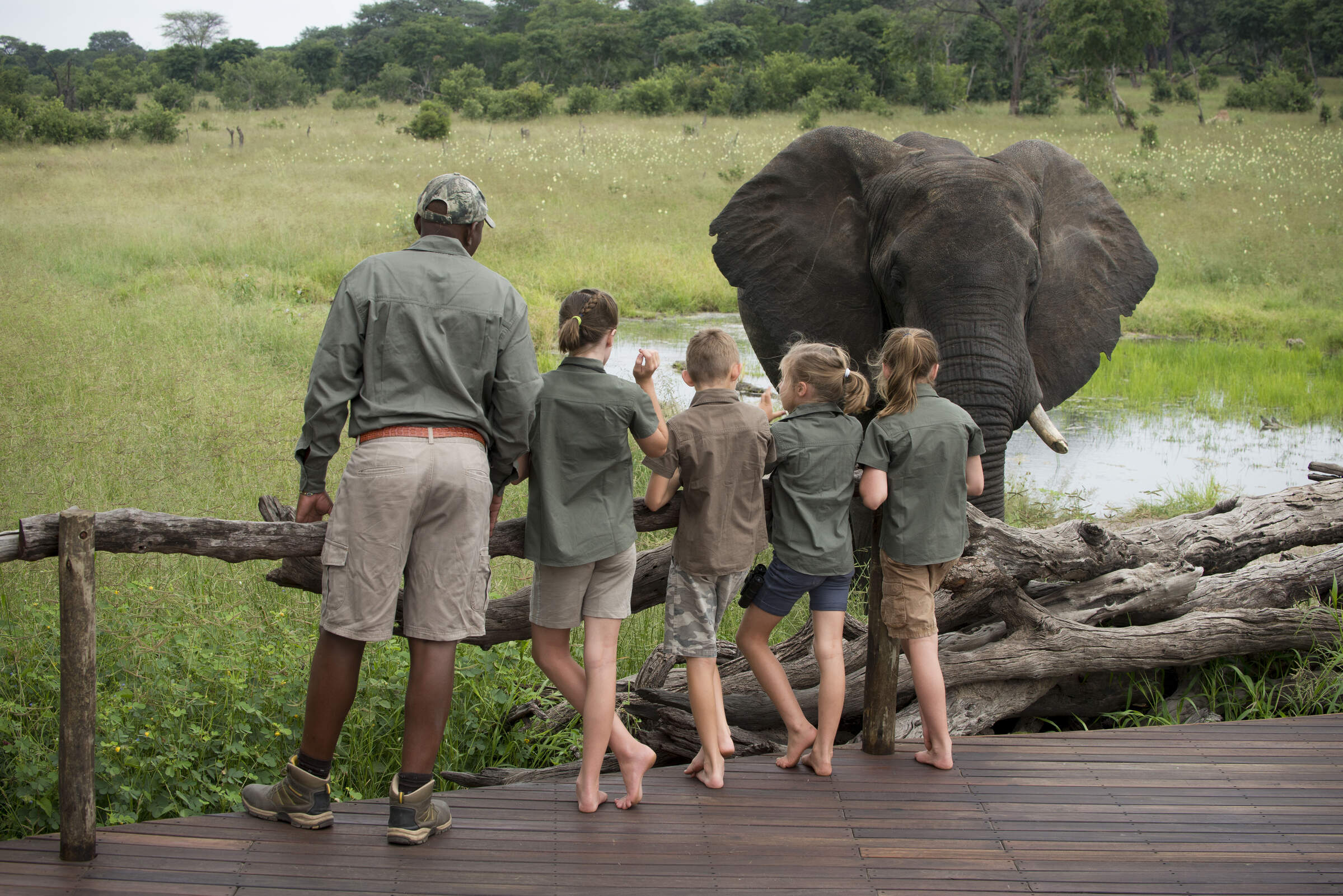
Somalisa Acacia
Somalisa Acacia is a family-friendly, yet remote and luxurious safari camp in Hwange National Park.
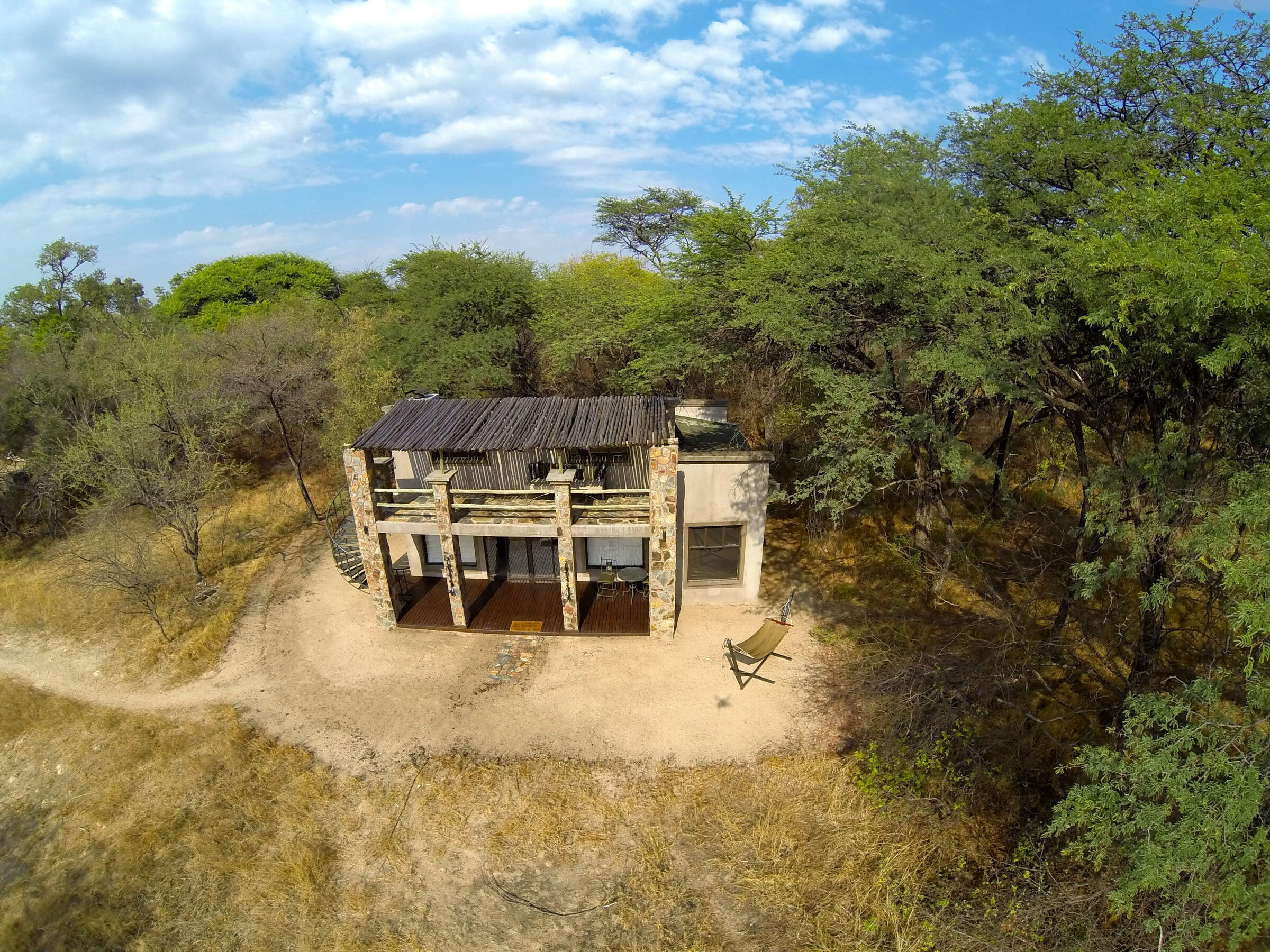
Camelthorn
Camelthorn is a stylish lodge with a range of activities in a remote region of western Zimbabwe, adjacent to Hwange National Park.
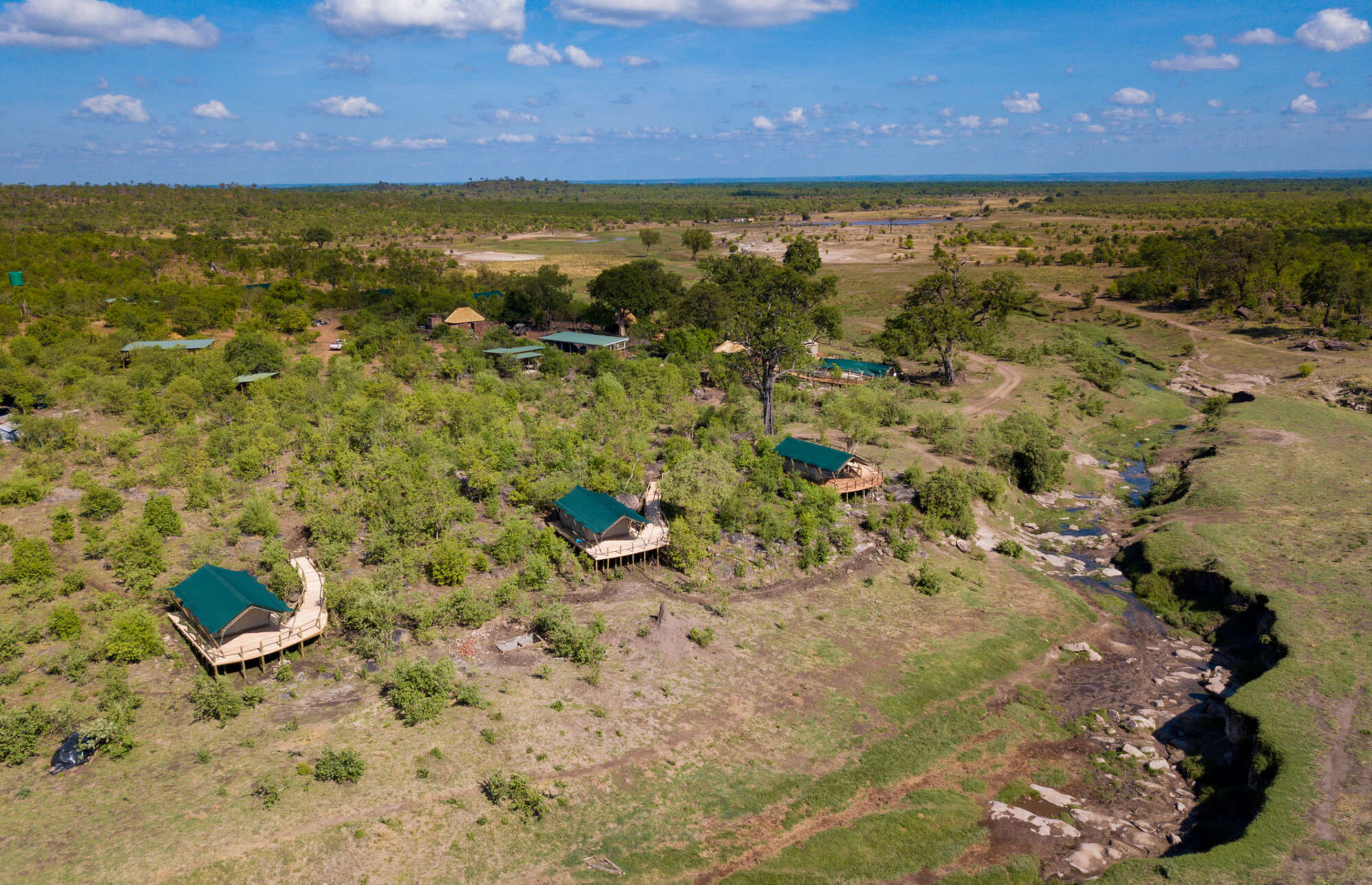
Deteema Springs Camp
In the remote north-west of Hwange National Park, Deteema Springs is a well-designed but unpretentious tented camp that offers good service and excellent wildlife potential.
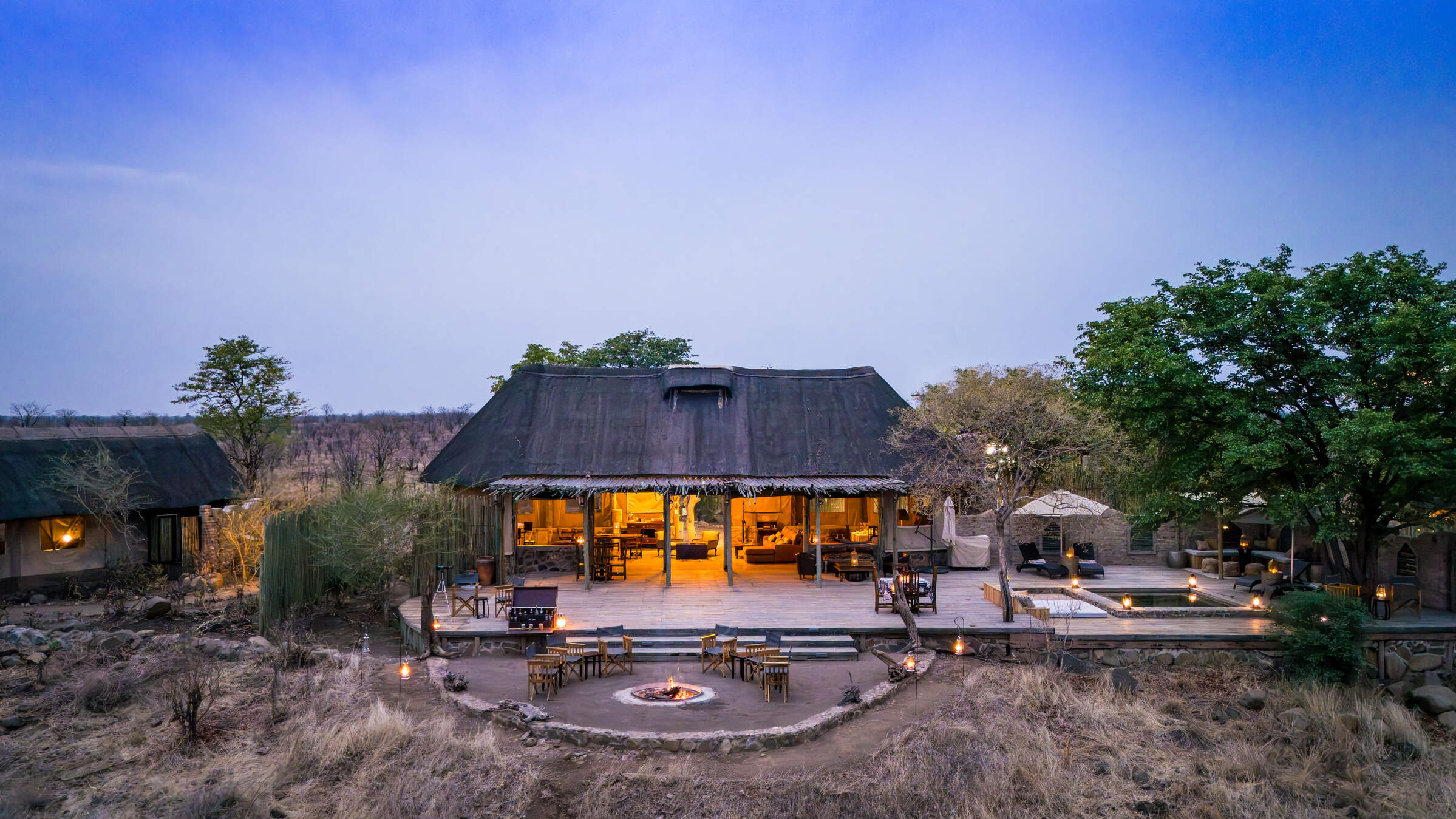
Daka Camp
One of the most remote camps in Hwange National Park, Daka Camp, like the smaller Daka Expeditions, sits almost on the border with Botswana.
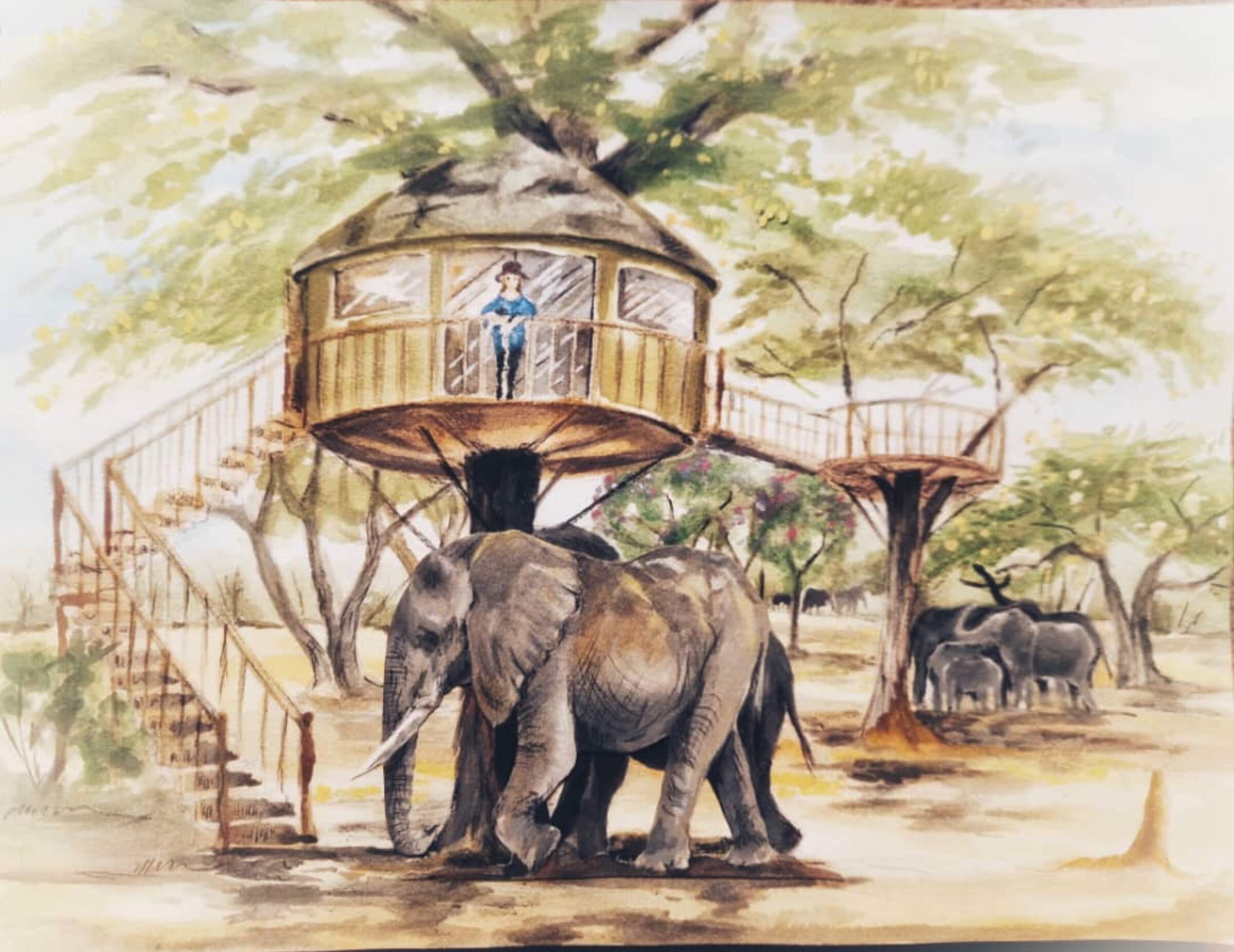
Tum Tum
The Tum Tum Treehouses are due to open in late 2025. Details on this exciting development are still scarce, so watch this space.
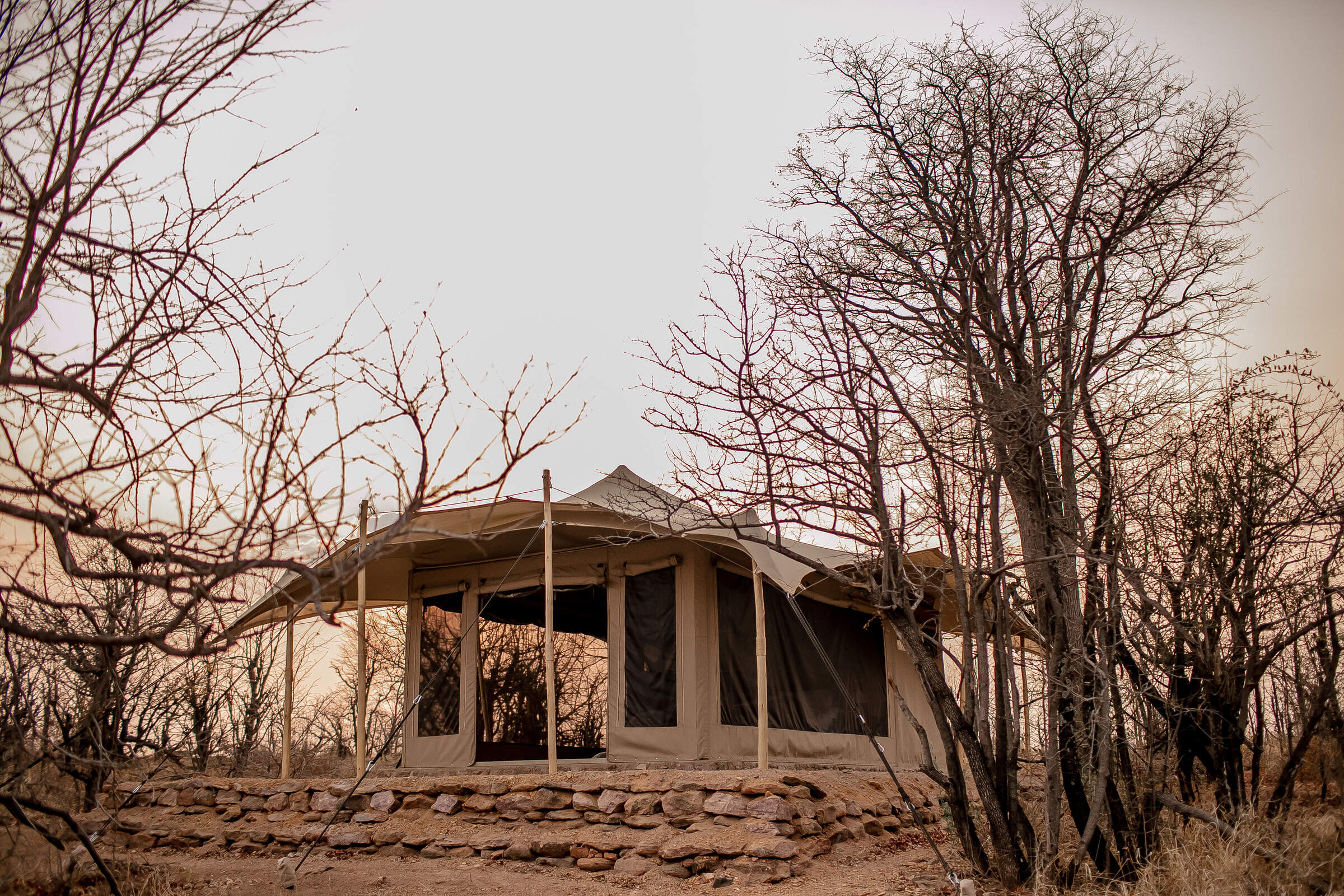
Camp Chitubu
Nestled in the rugged north of Hwange National Park, the unpretentious yet comfortable Camp Chitubu has a strong focus on excellent guiding.
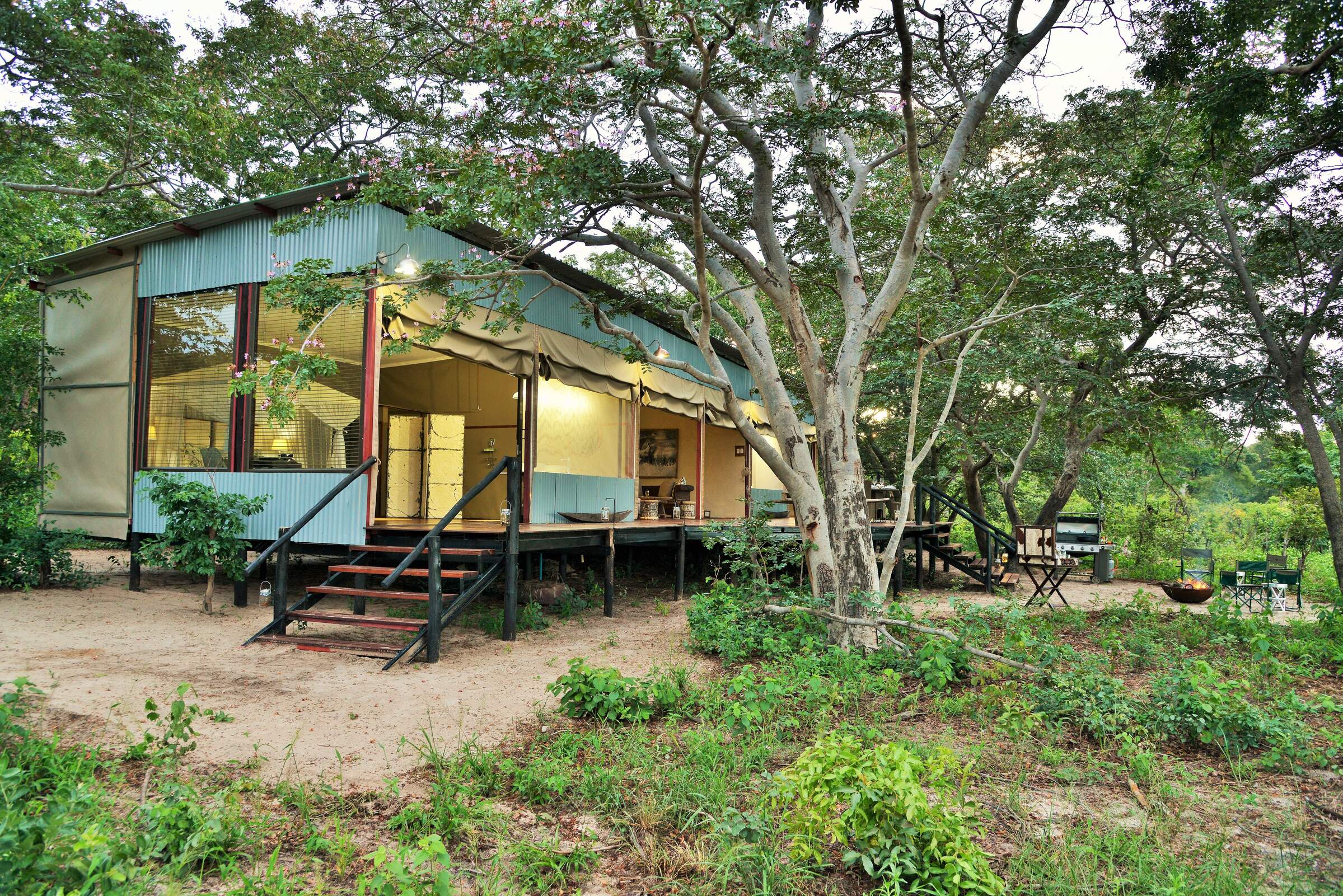
Khulu's Retreat
Just outside Hwange National Park, Khulu's Retreat is an exclusive private villa and is a great place to spoil yourself on a safari in Zimbabwe.
When to go to Hwange National Park
Our month by month guide: What it's like to visit Sable Valley Lodge in Hwange National Park
Jan
Feb
Mar
Apr
May
Jun
Jul
Aug
Sep
Oct
Nov
Dec
Zimbabwe in January
January falls in the middle of Zimbabwe’s rainy season and is the wettest month of the year. Heavy rainfall occurs most days, flooding seasonal rivers and waterholes, with the occasional sunny spell.
With the high levels of precipitation the wildlife in the national parks becomes widely dispersed, taking advantage of the abundance of food and water, and is easily hidden by the thick, green bush.
While sightings of larger animals are possible, and many species drop their young at this time, game viewing is often sparse. However, many migratory species of bird arrive in Zimbabwe making it a peak month for birding.
The rains create incredibly sticky mud in Mana Pools National Park, preventing access and causing camps to close for the season. The majority of the camps in other parks remain open, with low rates attracting a smattering of visitors.
- Peak of the rainy season: hot & humid with heavy rain most days
- Bush exceptionally thick and green, with poor game viewing
- Species such as impala drop their young
- All camps in Mana Pools closed
- Very few visitors, and low rates at open camps
Our view
A time to avoid if possible
Weather in January
Zimbabwe in February
February remains well within Zimbabwe’s rainy season. Although total rainfall drops, relatively short thunderstorms can still be expected most afternoons. On the plus side, there is a greater chance of some sunshine in-between.
Much of the country remains waterlogged, closing access to Mana Pools and severely restricting walking safaris in other parks. While game drives and canoeing remain an option, the abundance of water disperses animals, and thick grass can make it difficult to spot larger species, but birding remains excellent. Conversely, this is a great time of year to view the landscape, and is excellent for photographers. Sporadic cloud cover and clear air can make for some spectacular sunsets too, particularly over Lake Kariba and the Zambezi River where the reflections off the water add to the beauty.
- Generally wet with frequent thunderstorms & hot humid days
- Poor wildlife viewing due to dispersed animals & thick bush
- Clear air, green landscapes & exceptional sunsets
- All camps in Mana Pools closed
- Very few visitors & low rates at camps that are open
Our view
This is not a great time to visit
Weather in February
Zimbabwe in March
March is the final month of Zimbabwe’s rainy season, when the rains start to trail off and sunny days become the norm. However, some days the clouds can still build, breaking into thunderstorms in the afternoon.
Mana Pools remains closed throughout the month but the majority of camps in Hwange, Matusadona and Gonarezhou remain open. Here, the landscape is green and alive, with migrant species of birds taking advantage of the abundant insect life. Larger animals remain elusive though, and walking safaris remain restricted.
By this time of year, the rains have normally trickled down to the Zambezi River and the flow of water over the Victoria Falls starts to increase, but without kicking up too much spray to obscure the views.
- Last month of the rainy season: hot, humid days with occasional storms
- Lush vegetation means good birding, but poor game viewing
- Views of the Victoria Falls improve
- All camps in Mana Pools closed
- Open camps have few visitors & low rates
Our view
This is not a great time to visit
Weather in March
Zimbabwe in April
April marks the end of Zimbabwe’s rainy season and the end of summer. Clear skies are the norm, with just the occasional shower. Temperatures start to drop, failing to reach 30ºC most days and dropping down to around 10ºC at night.
As the rain fades the landscape starts to dry out. While the vegetation remains thick and green, the soil in Mana Pools dries enough for camps to open, and the only camps to remain closed are the most remote bushcamps in Hwange. Although viewing of larger animals remains tricky, the improved weather starts to draw back visitors, as do prices significantly below those in the peak season.
The Zambezi River and flow of water over the Victoria Falls is at its highest, although large amounts of spray diminish views of the waterfall itself.
- Transitional period, with much lower rainfall & falling temperatures
- Wildlife is still dispersed & hard to see, but sightings improving
- Views of the Victoria Falls often obscured by spray
- Camps in Mana Pools open
- Visitors start to return & camps increase their rates
Our view
A good time to visit, with pros & cons
Weather in April
Zimbabwe in May
The first month in the dry season, May is also Zimbabwe’s first month of winter. If the rains are particularly late in a given year, you may catch the odd shower, but you can expect clear and sunny days the majority of the time. While it’s warm in the daytime, temperatures drop to single digits at night, so bring a warm jumper and gloves for early morning drives.
With the rain having cleared the air, the sky is bright blue, and it’s the best time of year for photography.
Even the most remote camps in Zimbabwe are now open. With the lack of rainfall, vegetation dies back significantly, and seasonal rivers return to sand. Not only does this open up the possibility of walking safaris, but wildlife viewing becomes much more reliable.
- Start of the dry season, with milder days and cold nights
- Game viewing significantly improves as vegetation dies back
- Vegetation starts to turn from green to brown
- Best time for photography with crystal clear air
- Visitors start to return; all camps open & rates increasing
Our view
A very good time to visit
Weather in May
Zimbabwe in June
During June you can virtually be guaranteed of dry and sunny days, although temperatures continue to drop, and can get close to freezing at night in Hwange National Park. Jumpers, jackets and gloves are strongly recommended for early mornings and evenings.
The opportunities for wildlife viewing improve throughout the month as the landscape rapidly dries, and the animals start to gather on the banks of the Zambezi River and around Hwange’s waterholes.
Water levels in the Zambezi River start to drop, reducing the amount of spray kicked up at the Victoria Falls and greatly improving visibility, but still allowing a full curtain of water to cascade over the edge.
- Middle of winter, with night-time temperatures close to freezing
- Game viewing significantly improves throughout the month
- Views of the Victoria Falls are at their best
- Noticeable increase in visitor numbers
- Camps considerably more expensive
Our view
A very good time to visit
Weather in June
Zimbabwe in July
July sits in the middle of Zimbabwe’s dry season. Although it’s warm at midday, temperatures are generally cold and in Hwange it’s been known to drop below freezing at night, with the lower-altitude Mana Pools feeling a bit warmer.
With wildlife clustering around the few remaining waterholes, sparse vegetation, and some of the best views of the Victoria Falls, this is one of the most popular times to travel, with camps charging peak season rates to reflect this. That said, visitor numbers to the country in general remain low, and outside of the Victoria Falls it’s rare for any areas to feel crowded.
- Middle of the dry season with almost no chance of rain
- Clear sunny days, but very cold nights
- Wildlife viewing good; game drives and walking safaris unrestricted
- Views of the Victoria Falls at their best
- Camps charging peak season rates
Our view
A very good time to visit
Weather in July
Zimbabwe in August
While August is the end of winter and temperatures are starting to creep up, mornings and nights are still cold, and game drives in open vehicles can feel particularly chilly. Well into the dry season, the landscapes will have mostly transformed from green to brown and wildlife viewing in Zimbabwe’s national parks is approaching its best. Due to dust kicked up into the atmosphere and smoke from bush fires you may start to notice a haze on the horizon, but this doesn’t significantly impact photography.
August is one of the most expensive months, and the pleasant weather and decent game viewing attracts lots of visitors. While the national parks rarely feel crowded, Victoria Falls accommodation can sell out a year in advance.
- Warm, sunny days but cold mornings & nights; almost no chance of rain
- Wildlife viewing nearly at its best
- Landscape turns brown, & an atmospheric haze develops
- All camps charging peak season rates
Our view
Fantastic: the very best time to visit
Weather in August
Zimbabwe in September
Temperatures in September rarely drop below 15ºC, but are yet to reach the oppressive highs of summer. It will normally have been five months since the last drop of rain, so antelope and elephants cluster around whatever water remains, with predators never too far away.
The landscape is very brown, and the haze building on the horizon takes some of the colour out of the sky, so while animal subjects are plentiful, the background is not ideal for photography.
The combination of incredible wildlife viewing, hot and sunny weather, and cheaper flights outside of the school holidays make this the most popular time of year to travel, and availability at the camps can become limited up to a year in advance.
- The best month for weather, with a pleasantly warm temperature range
- One of the best months for game viewing
- Victoria Falls starting to dry but still impressive on Zimbabwean side
- All camps are charging peak season rates
- Most popular time to travel, & space can be limited
Our view
Fantastic: the very best time to visit
Weather in September
Zimbabwe in October
October is the last month of the dry season with little chance of rain but building humidity. While the higher elevation of Hwange National Park limits temperatures to the 30s Celsius, they can easily top 40ºC in Mana Pools.
With little vegetation or water, wildlife is drawn to the few remaining water sources and viewing is at its best; visitors who brave the heat can be rewarded with some exceptional sightings, although haze in the air diminishes photos. Maximum visibility and dense wildlife concentrations can also make for very rewarding walking safaris, although the heat can make them uncomfortable.
Water levels in the Zambezi at the Victoria Falls drop significantly, and large stretches of the waterfall are a dry cliff-face – although it never dries completely. Camp rates remain at their peak, but visitor numbers drop as people avoid the heat.
- Last month of the dry season; very hot with building humidity
- Wildlife viewing at its very best
- Dust & smoke in the air diminish photographic opportunities
- Victoria Falls starting to look very dry
- Camp rates remain at their peak
Our view
A very good time to visit
Weather in October
Zimbabwe in November
November is a transitionary period, with high temperatures and humidity. While they can’t be predicted with any precision, the first rains normally arrive halfway through the month, in the form of thunderstorms lasting a few hours each day.
Early November is a popular time to travel as the camps drop their rates, so if you’re lucky you can get peak-season game viewing at low-season rates. This is a gamble though as if the rains do arrive, animals are no longer limited to a few dangerous waterholes and will disperse into the bush. While all the camps in Mana Pools intend to remain open, the rains can make the airstrips unusable so you may find yourself moved to a different park, a risk that increases through the month.
- Typically the start of the rains in Zimbabwe
- Temperatures & humidity levels remain high
- Wildlife viewing rapidly diminishes as the rains arrive
- Camps remain open, but risk early closure in Mana Pools
- Much cheaper time to travel as camps drop their rates
Our view
A good time to visit, with pros & cons
Weather in November
Zimbabwe in December
By December the rainy season has begun in earnest; this is one of the wettest months in Zimbabwe, with heavy thunderstorms most afternoons and occasionally continuous rain for a couple of days. While temperatures start to cool down the high levels of humidity can make the heat feel more oppressive.
With the rains comes an explosion of green growth, and the dust and smoke are washed out of the air. The resulting scenery – with the occasional bright blue skies – can be fantastic for photographers. Thick vegetation and plentiful water makes viewing of larger animals tricky, but with migratory species arriving the birding is at its best.
All camps in Mana Pools and the remote Hwange camps close, with those remaining open charging their lowest rates.
- One of the wettest months in Zimbabwe
- High temperatures & levels of humidity
- Wildlife viewing poor, but birding good
- Lush green landscapes & clear air; great for landscape photography
- All camps in Mana Pools closed
Our view
This is not a great time to visit
Weather in December

Looking for inspiration on where to travel next?
Visit our trip chooser to explore your options and find inspiration for your perfect African adventure
Inspire me